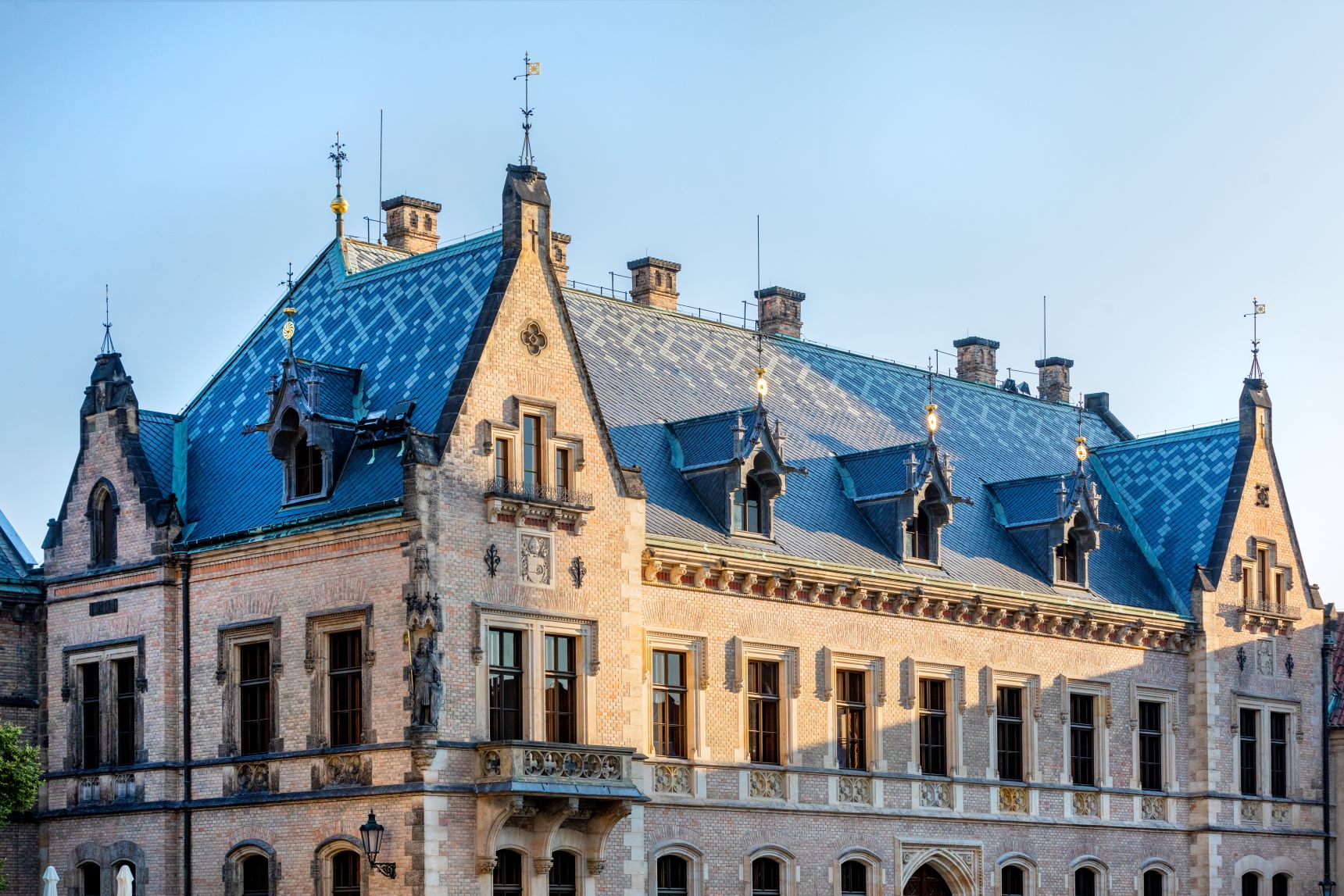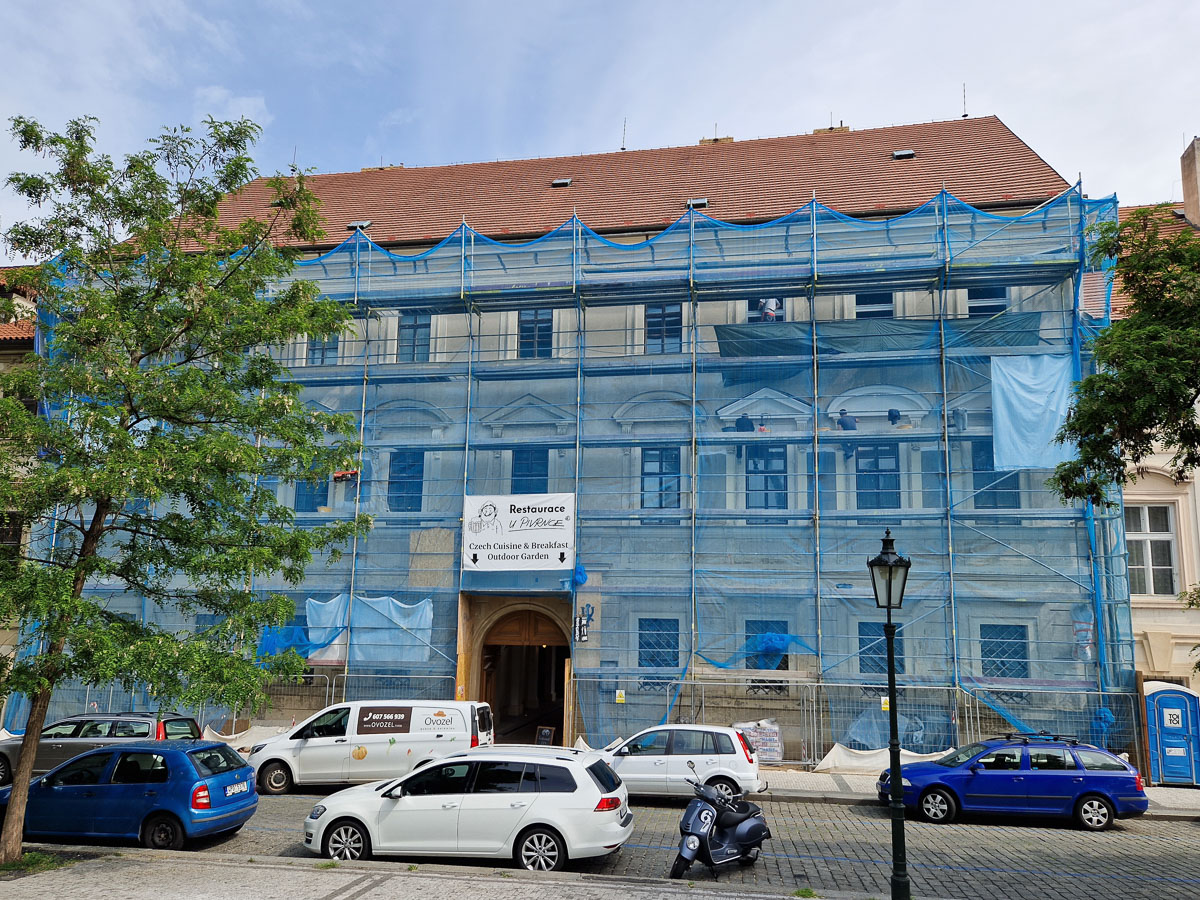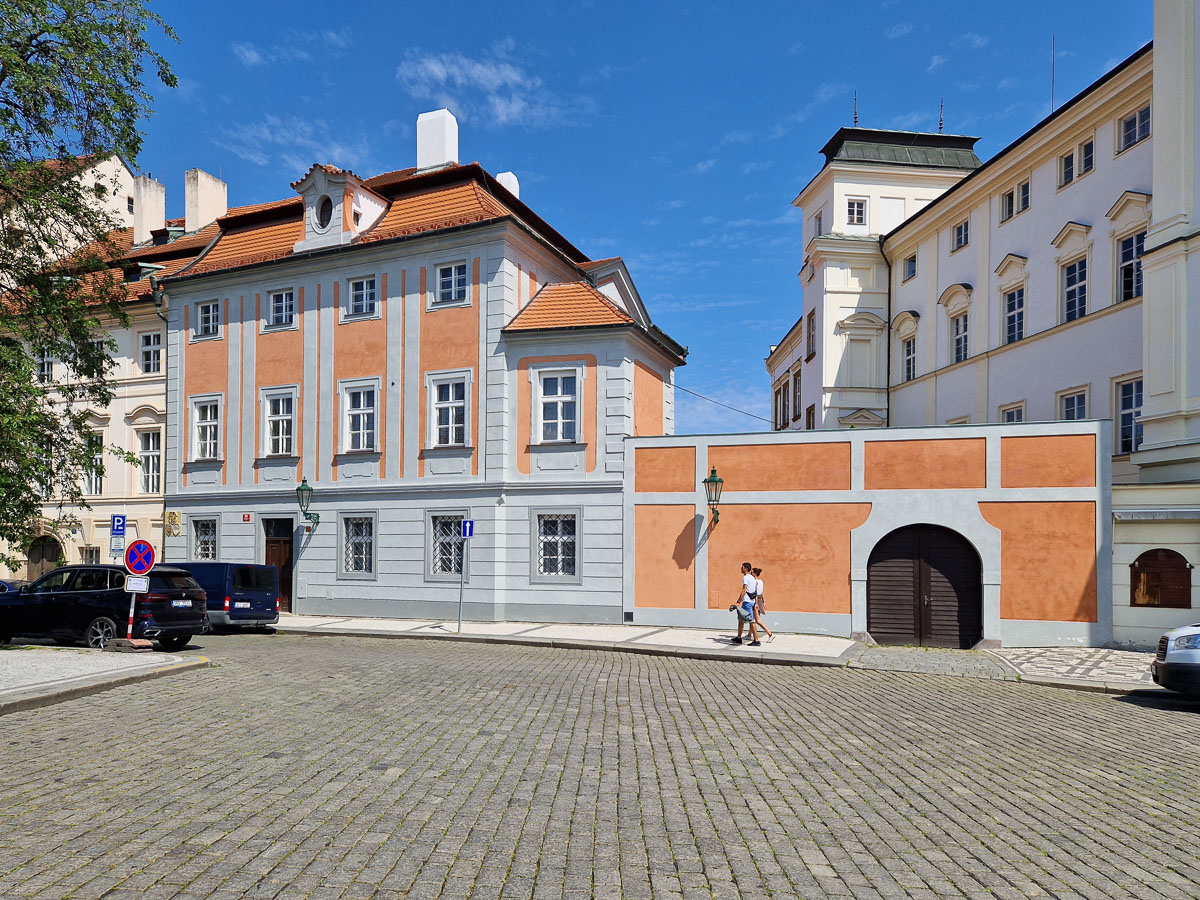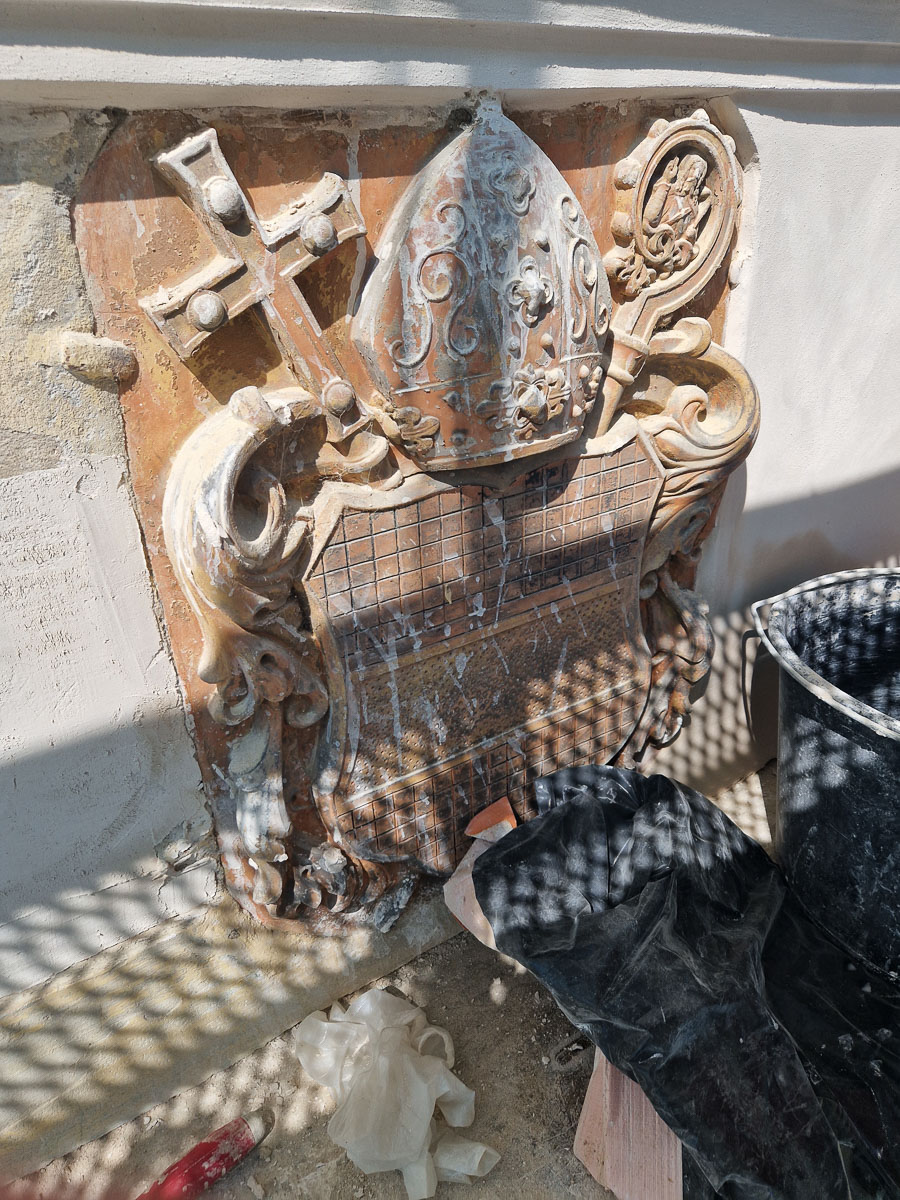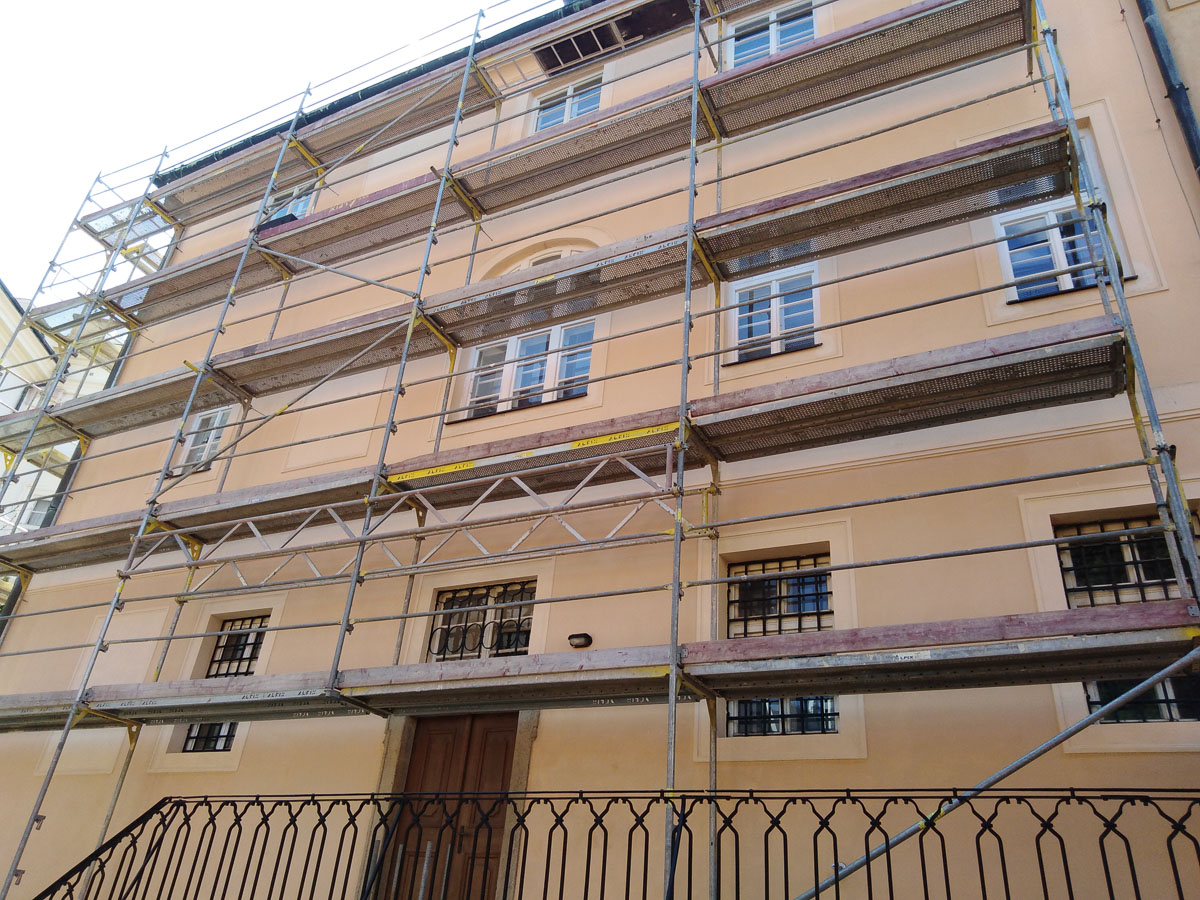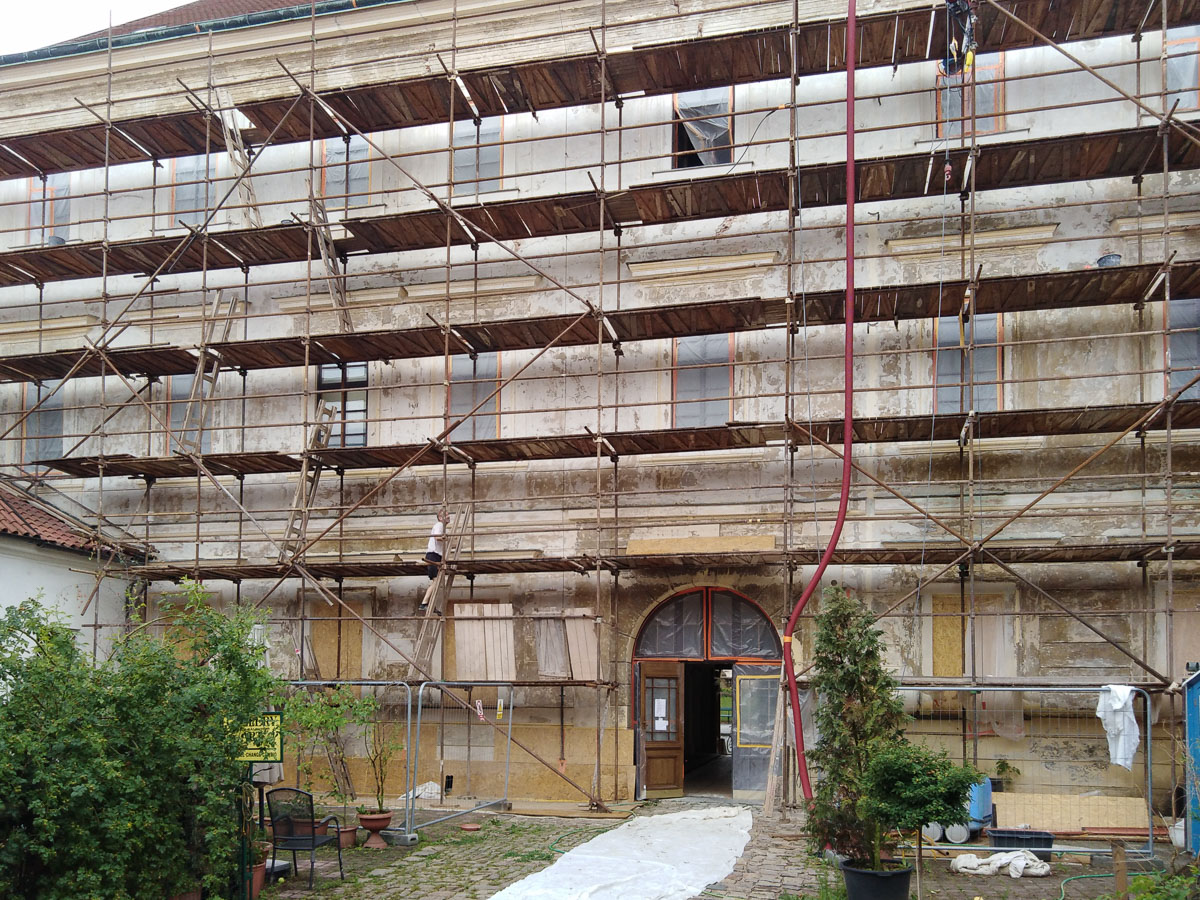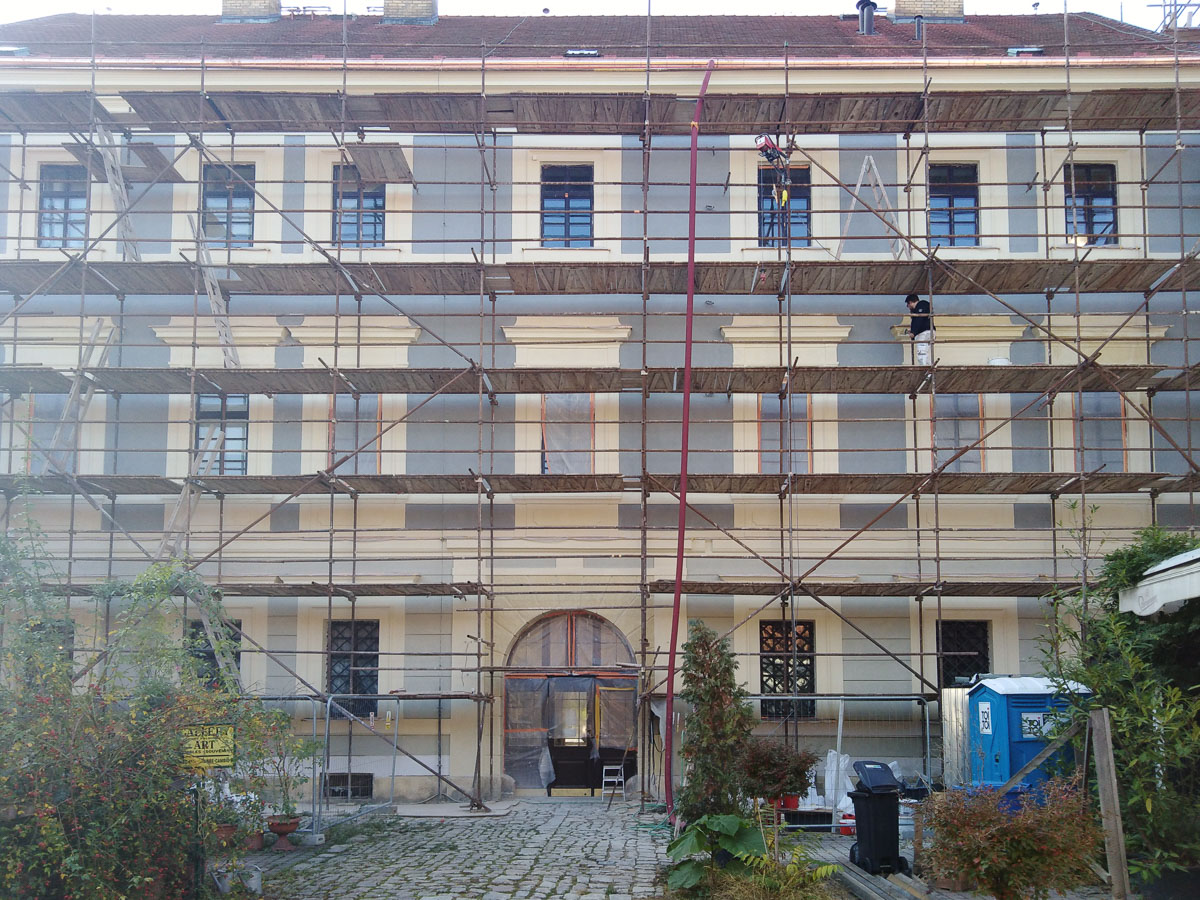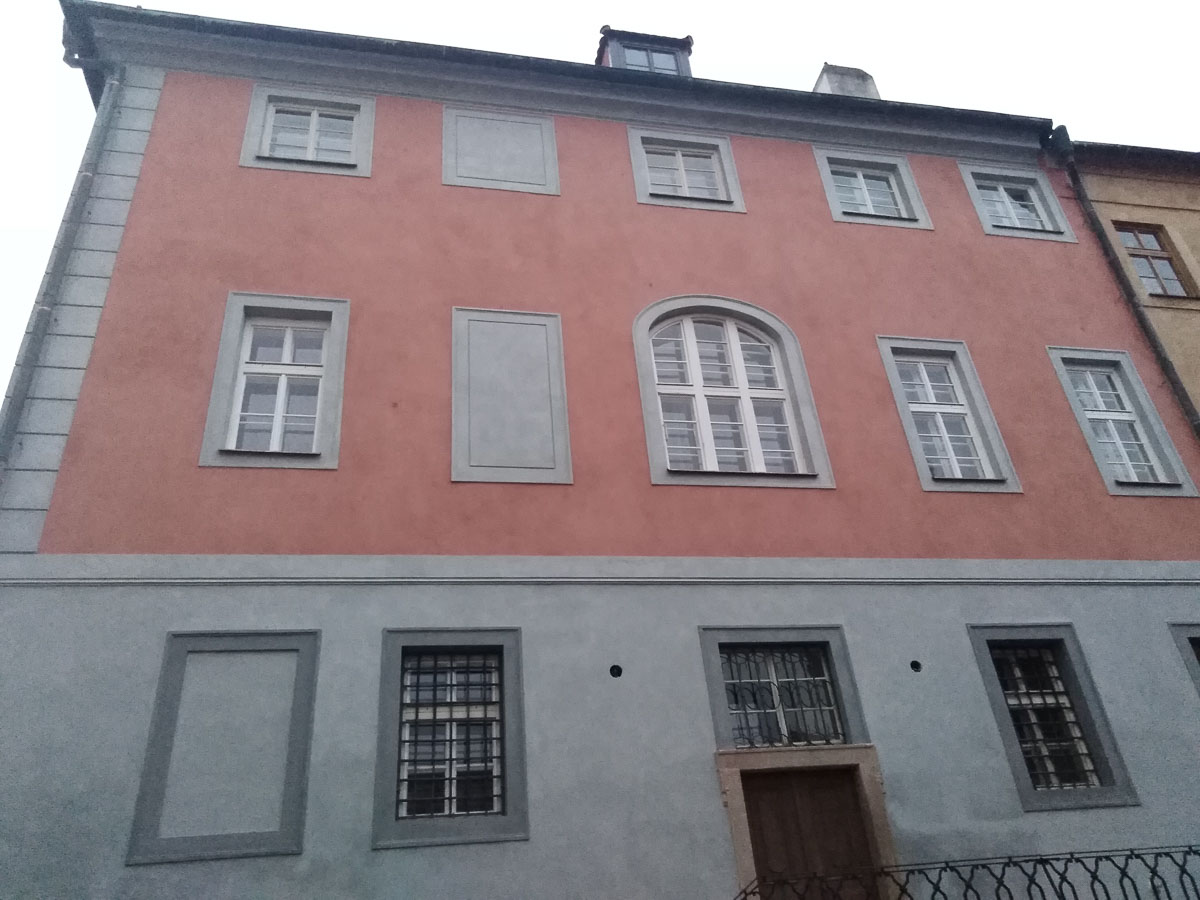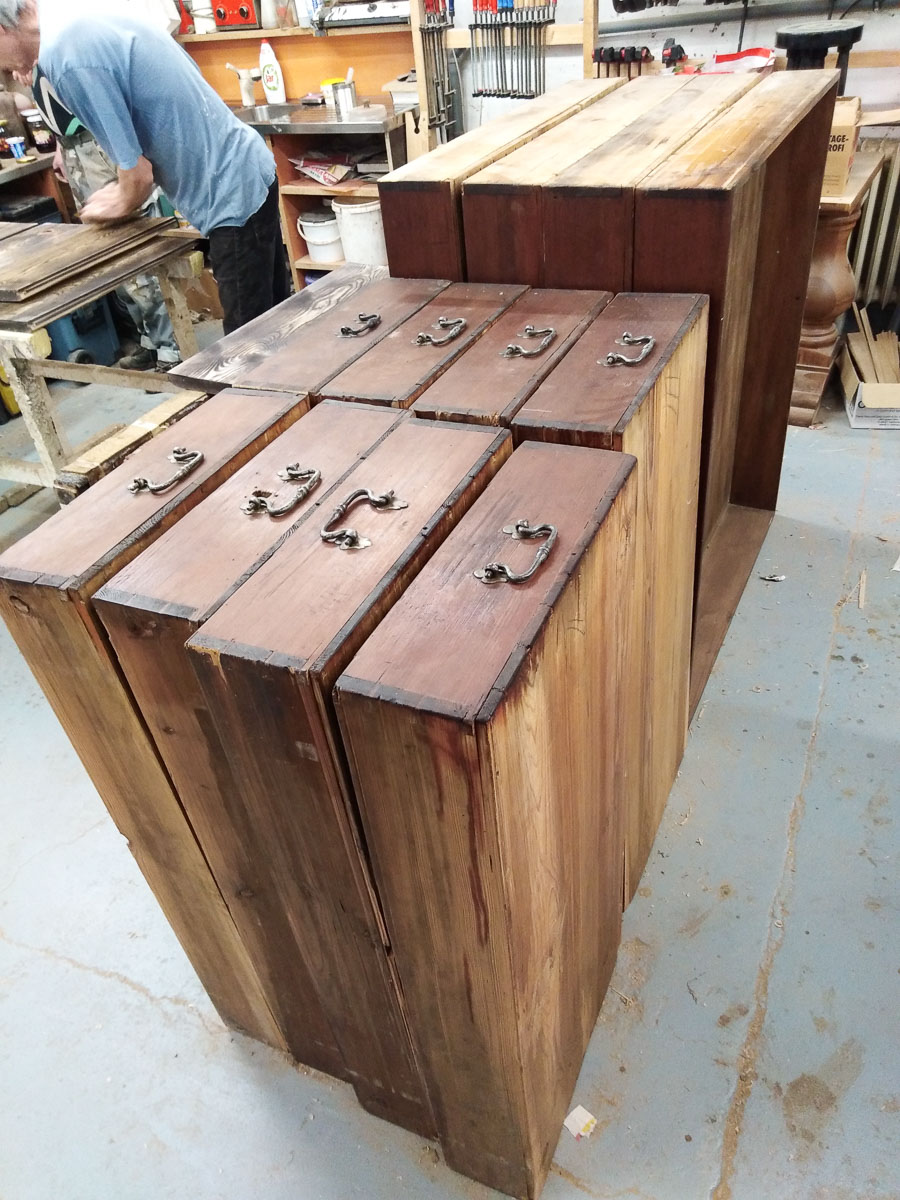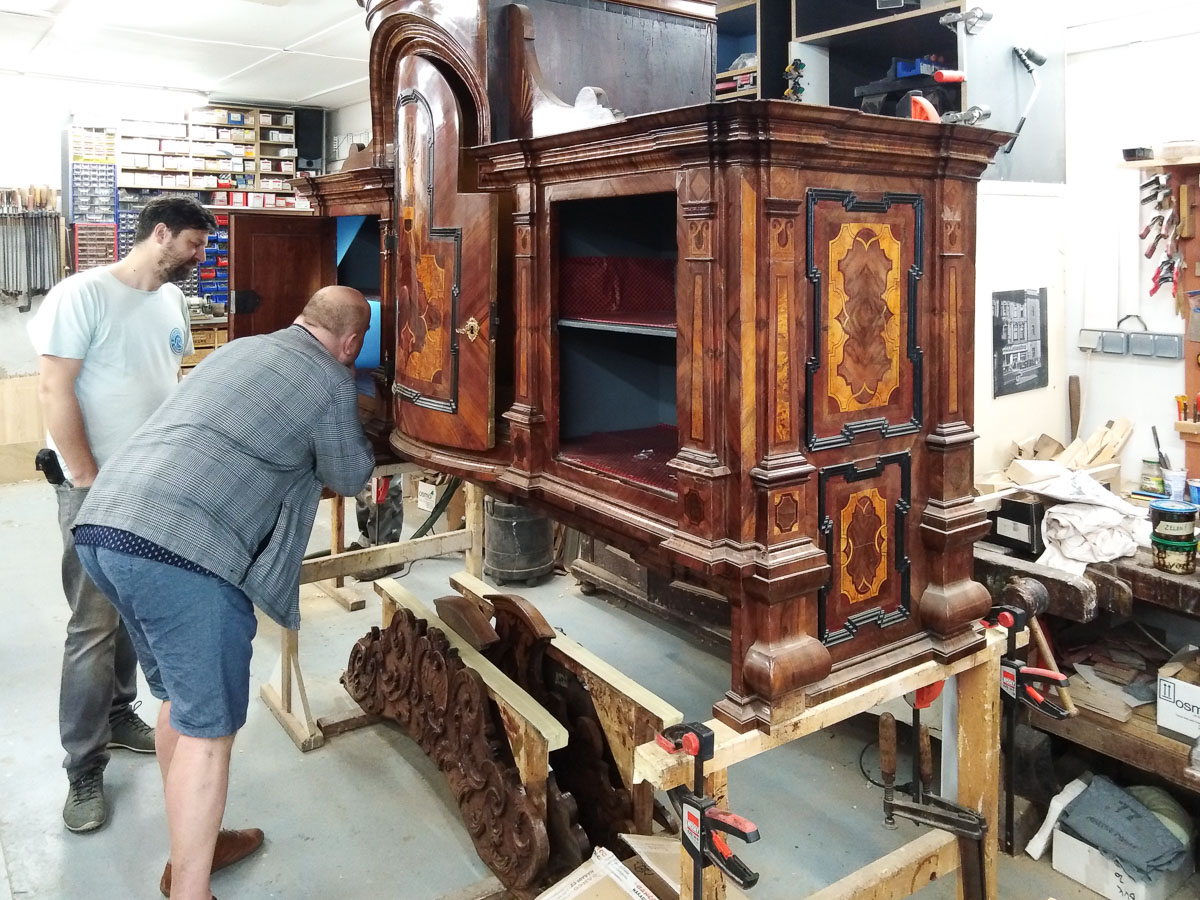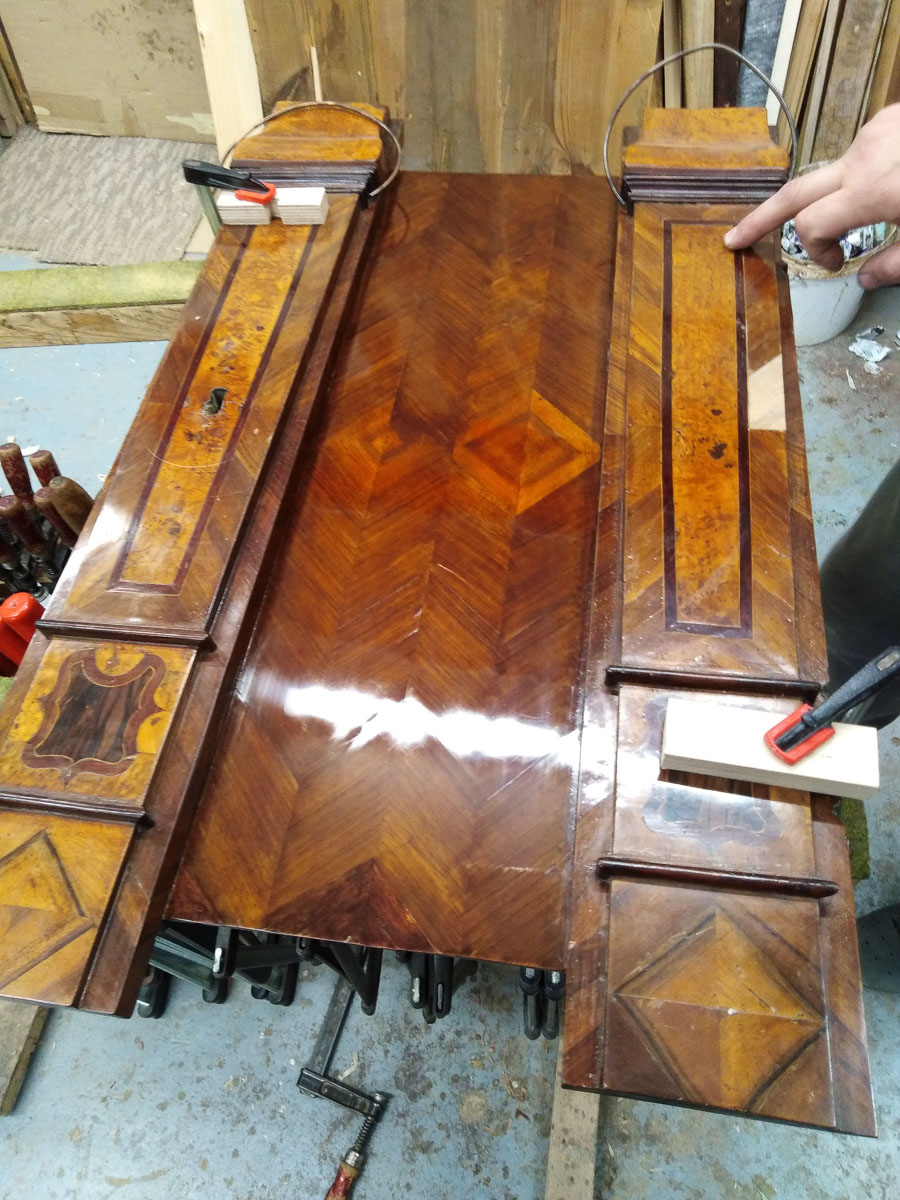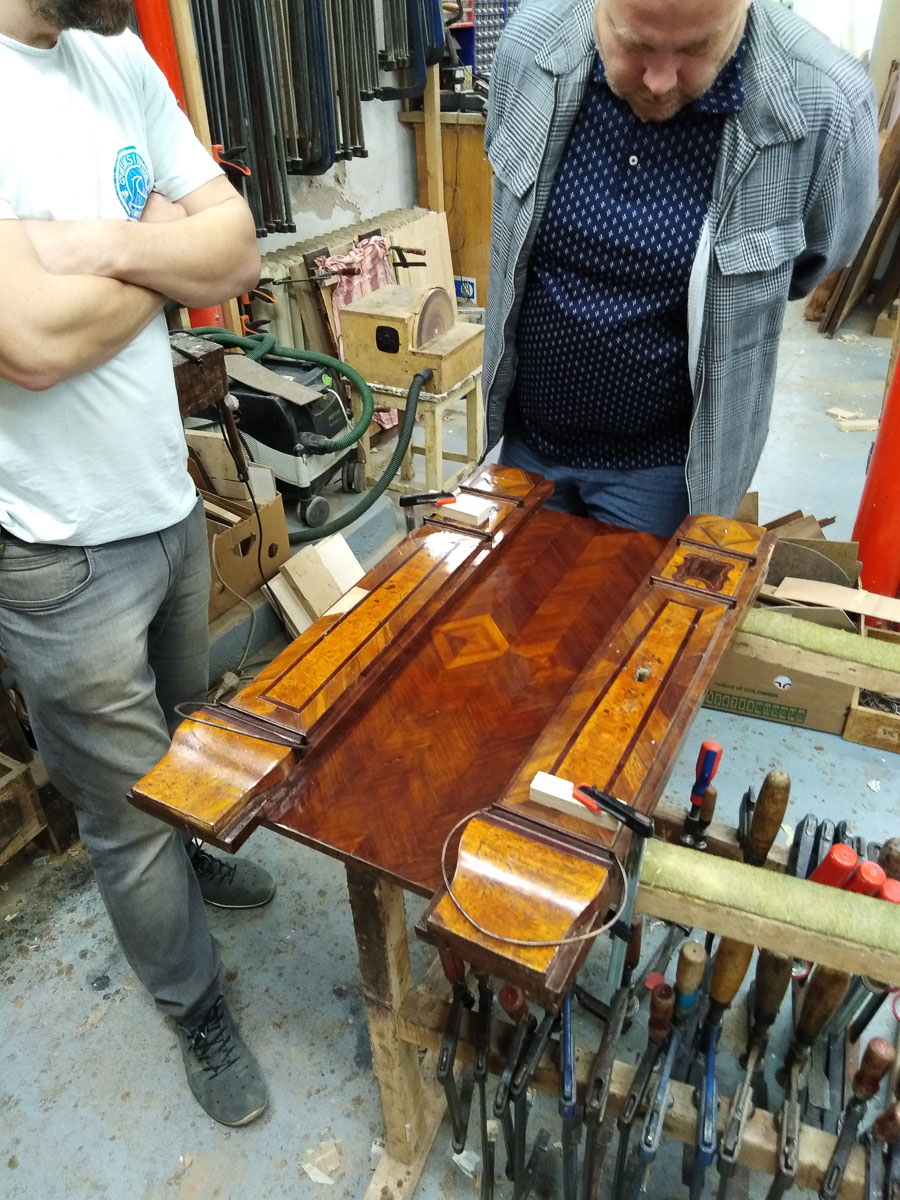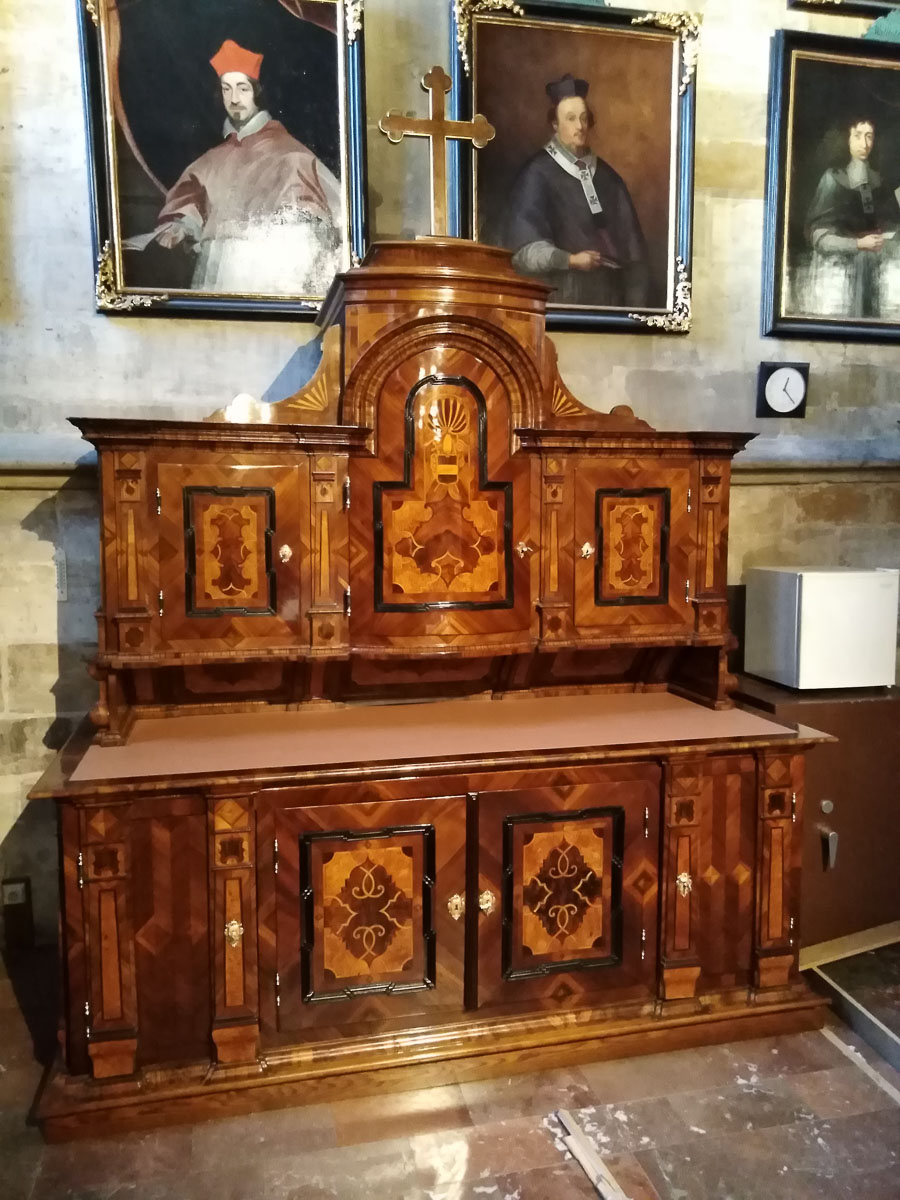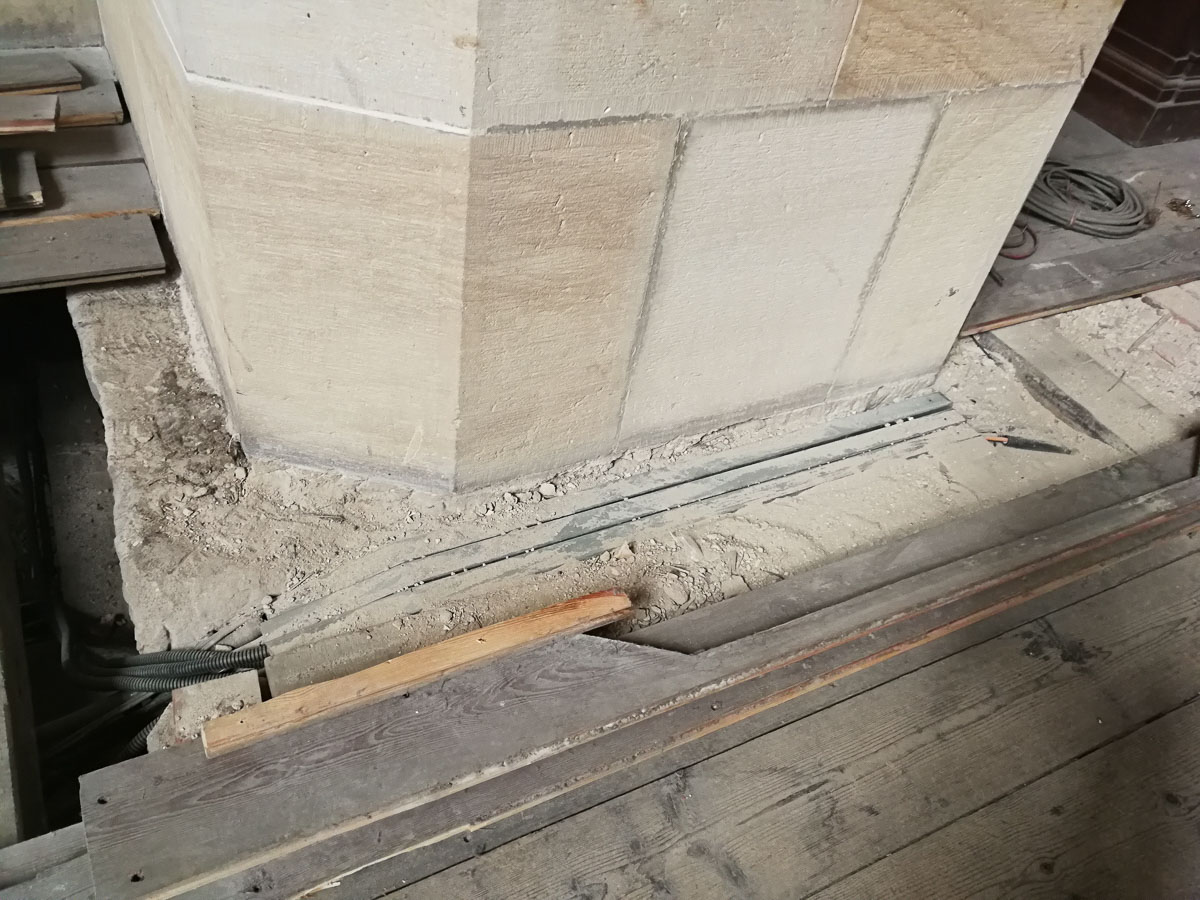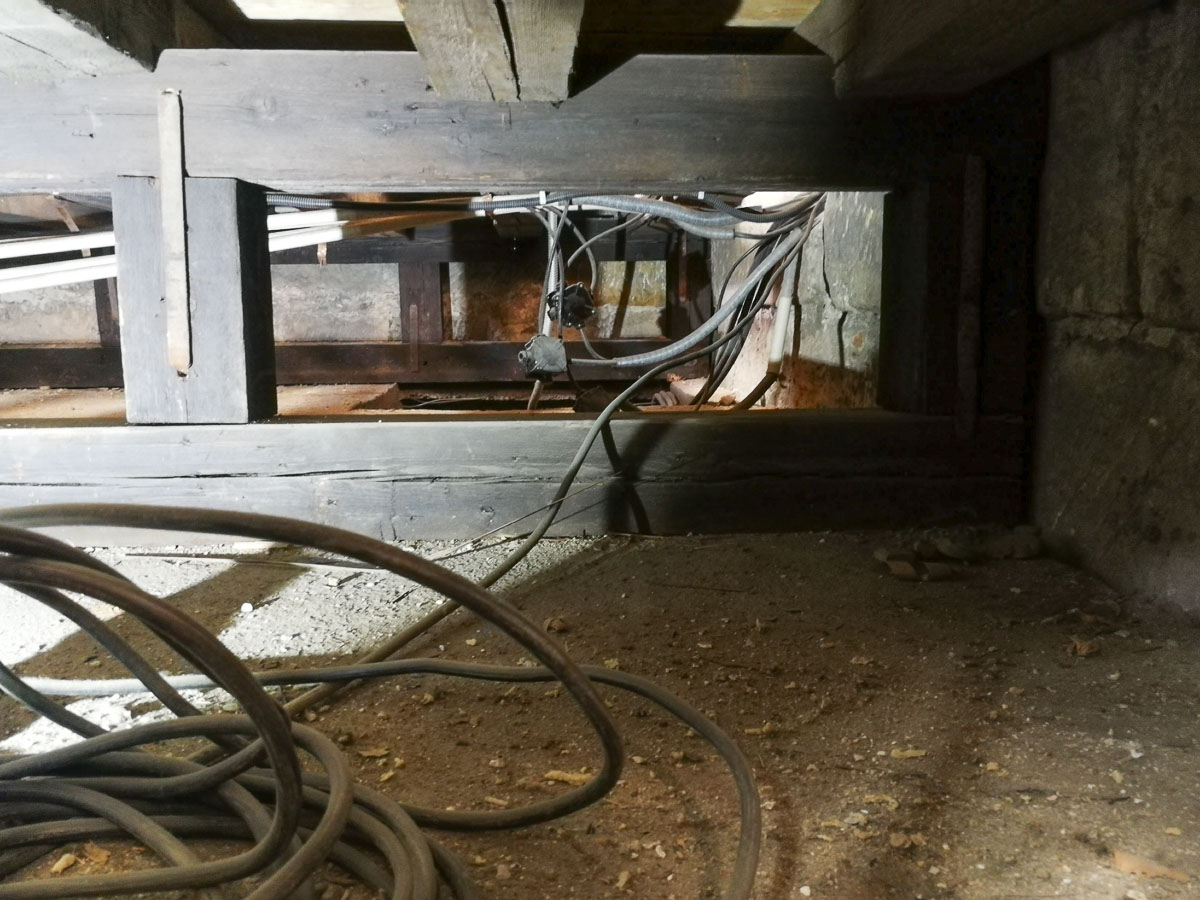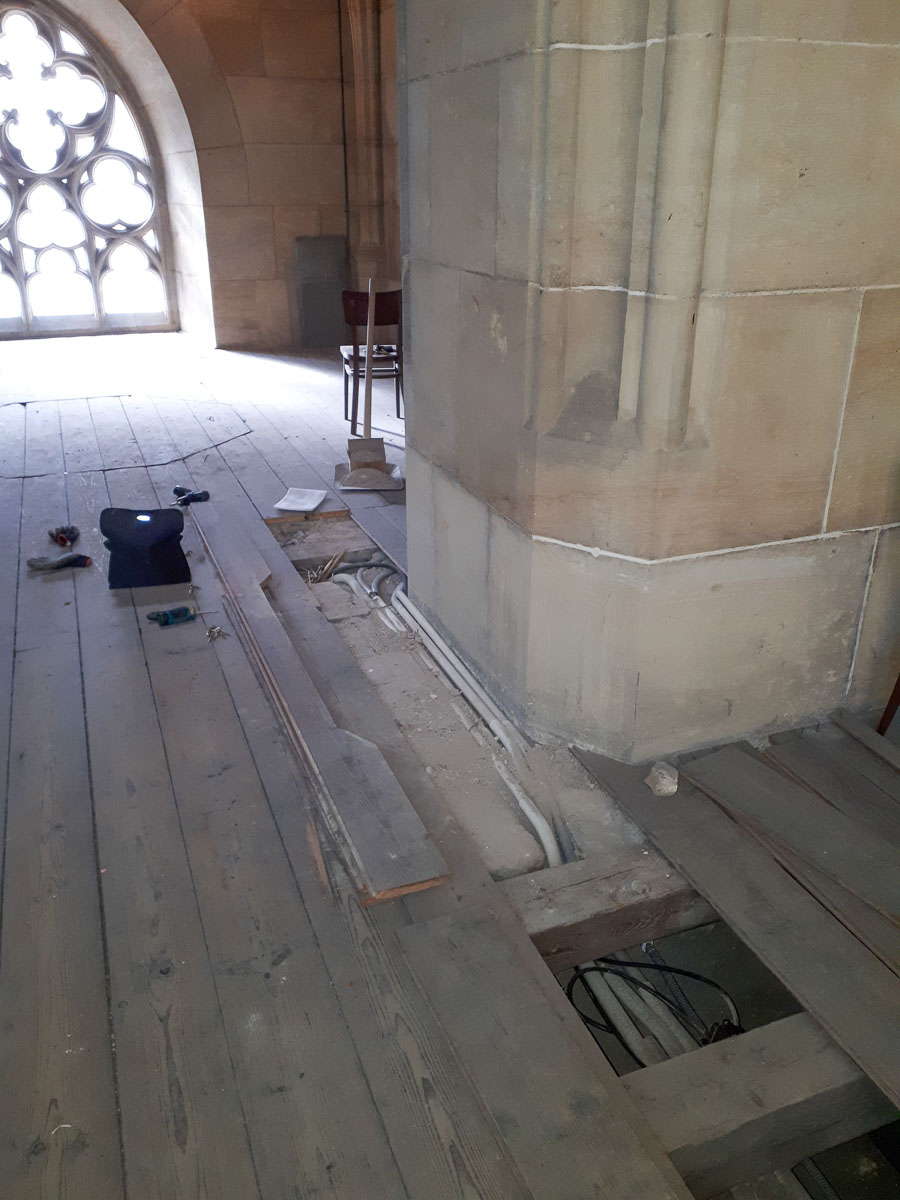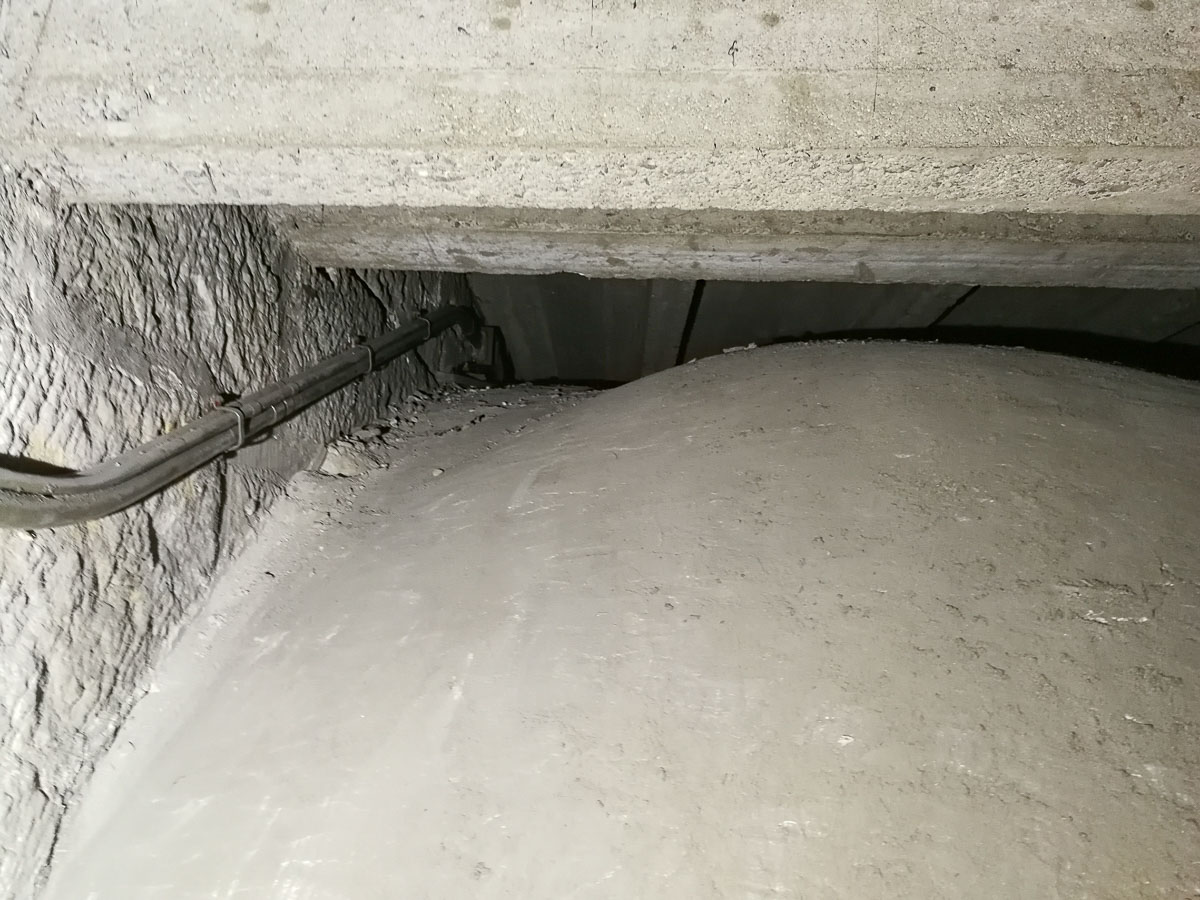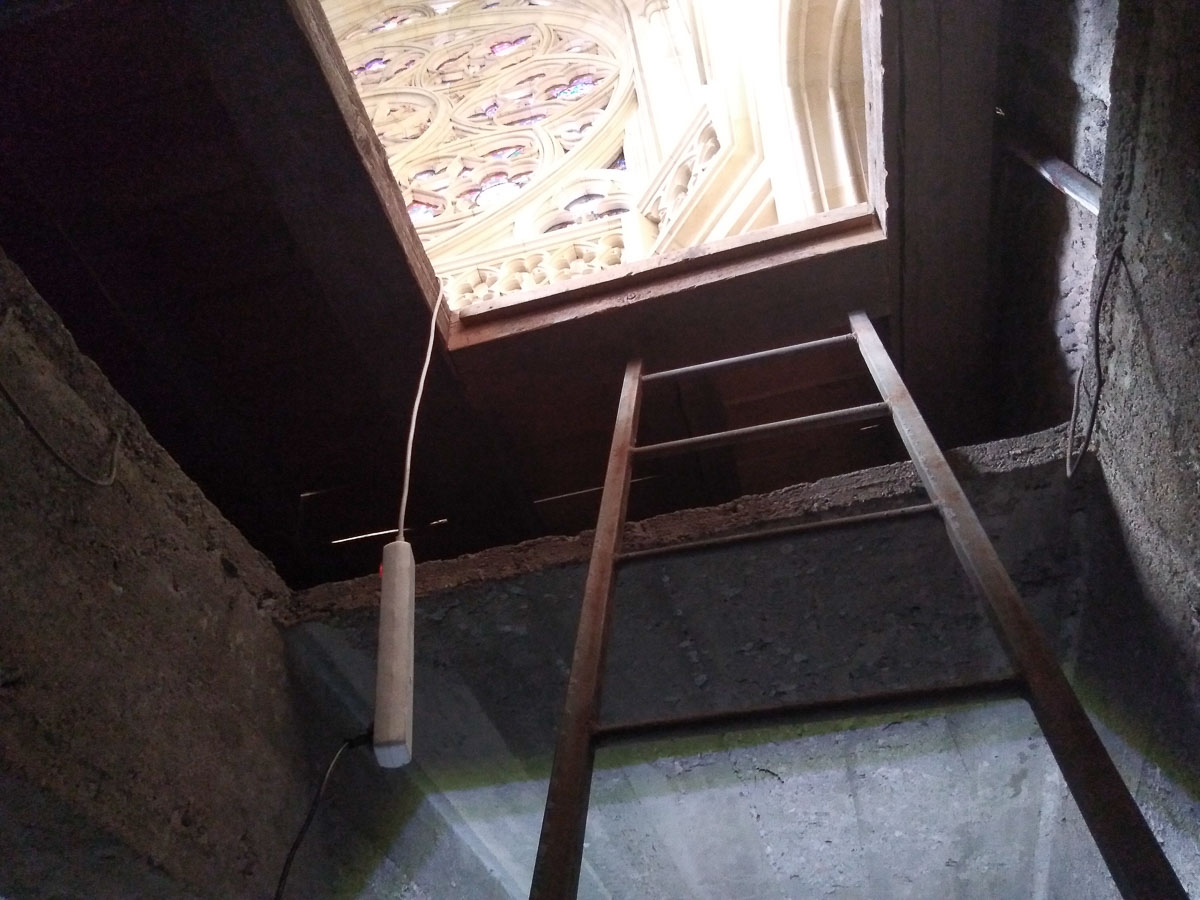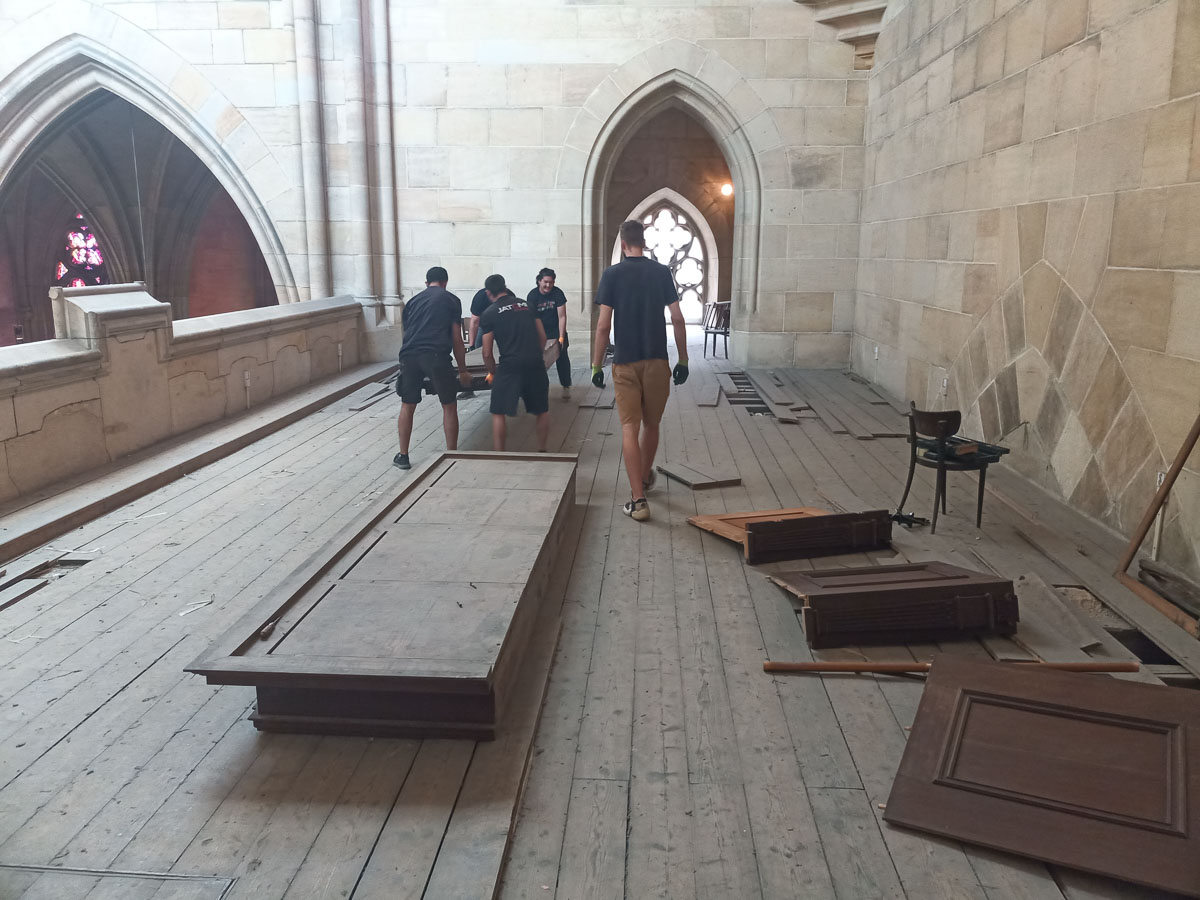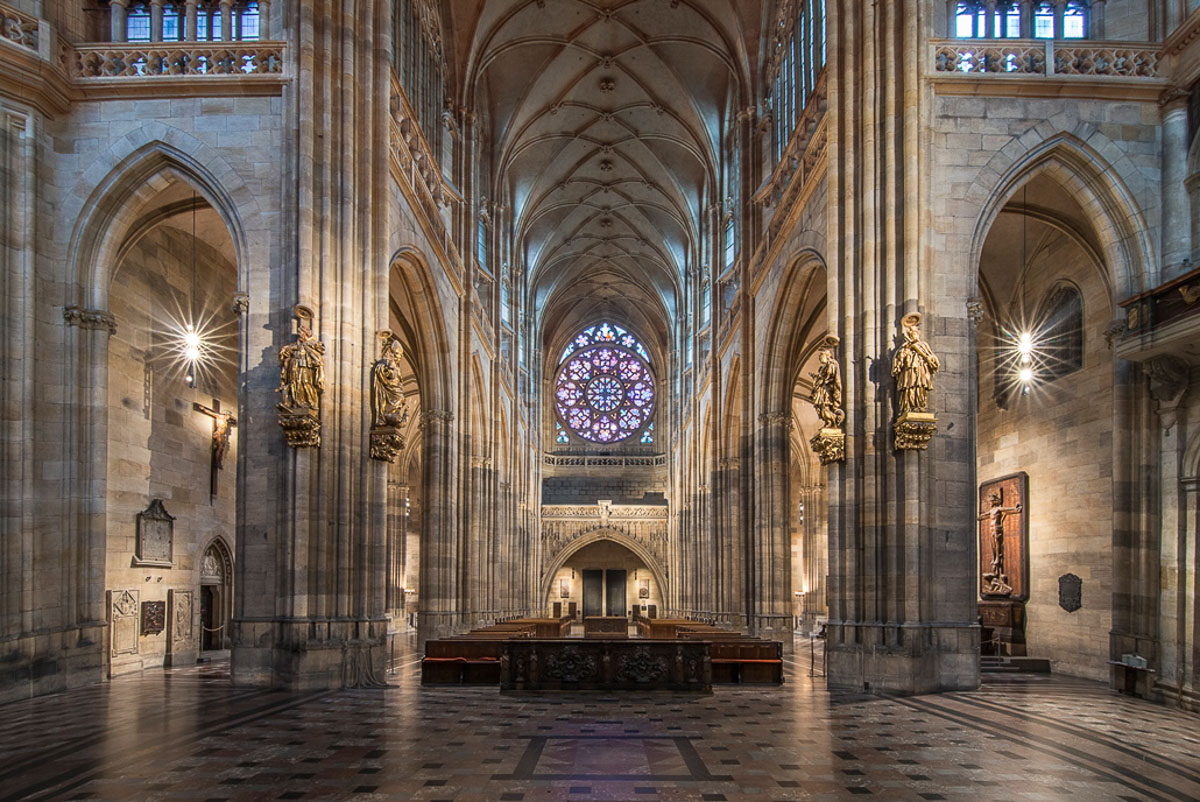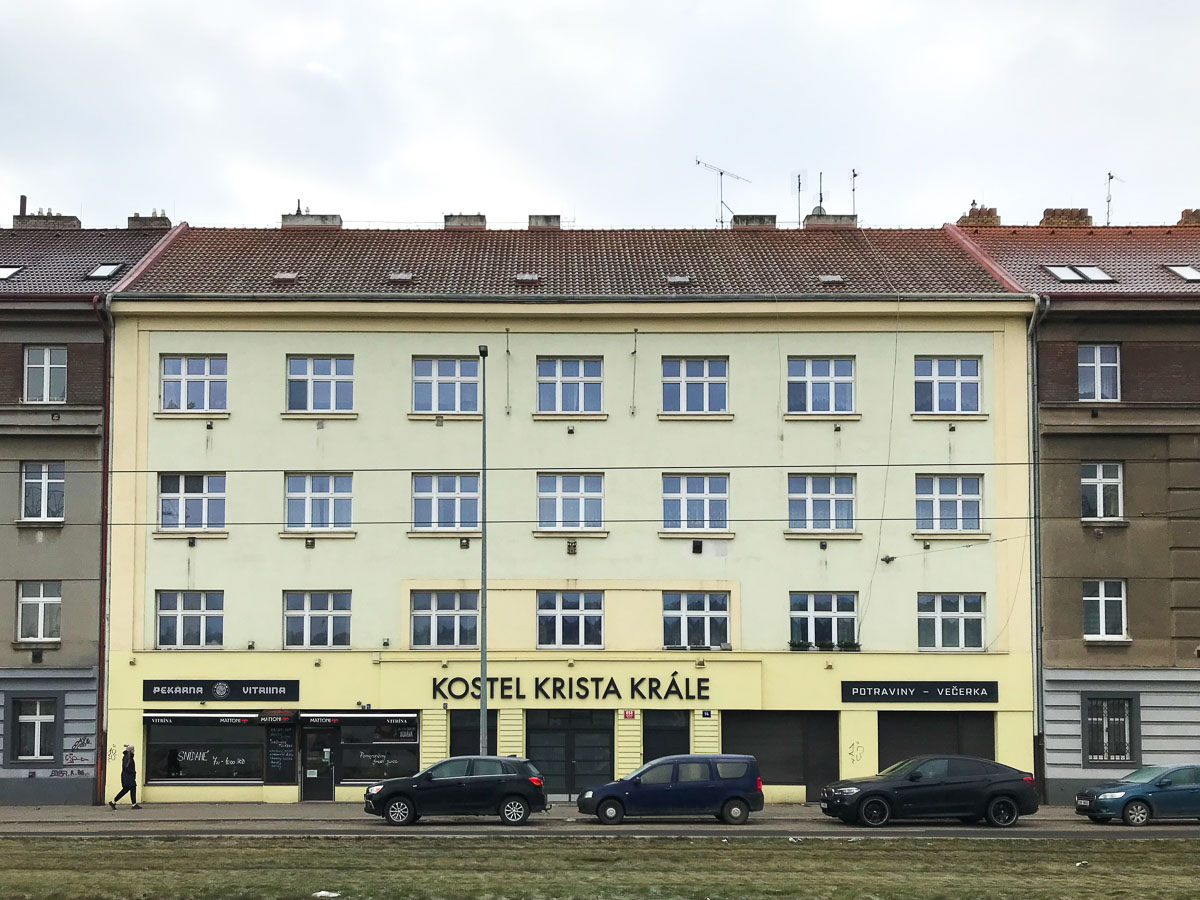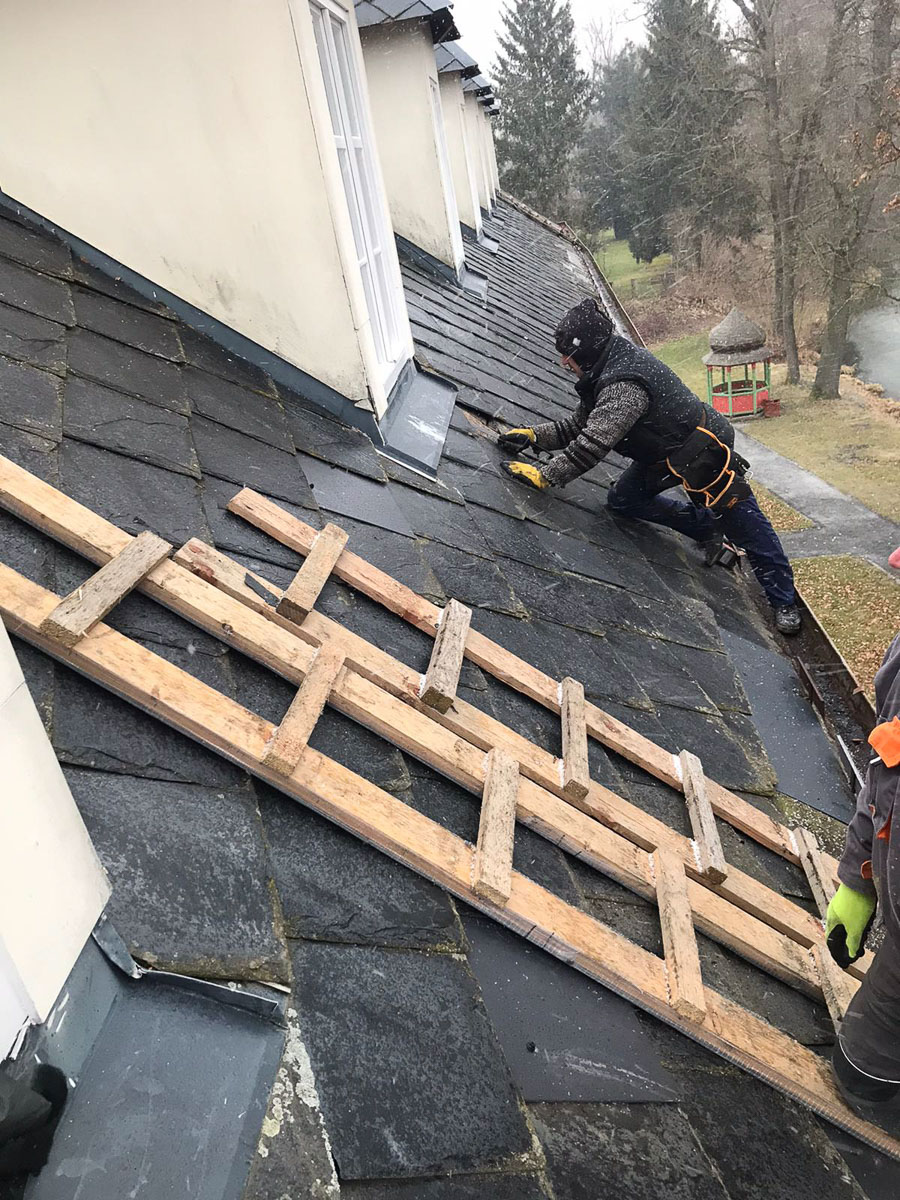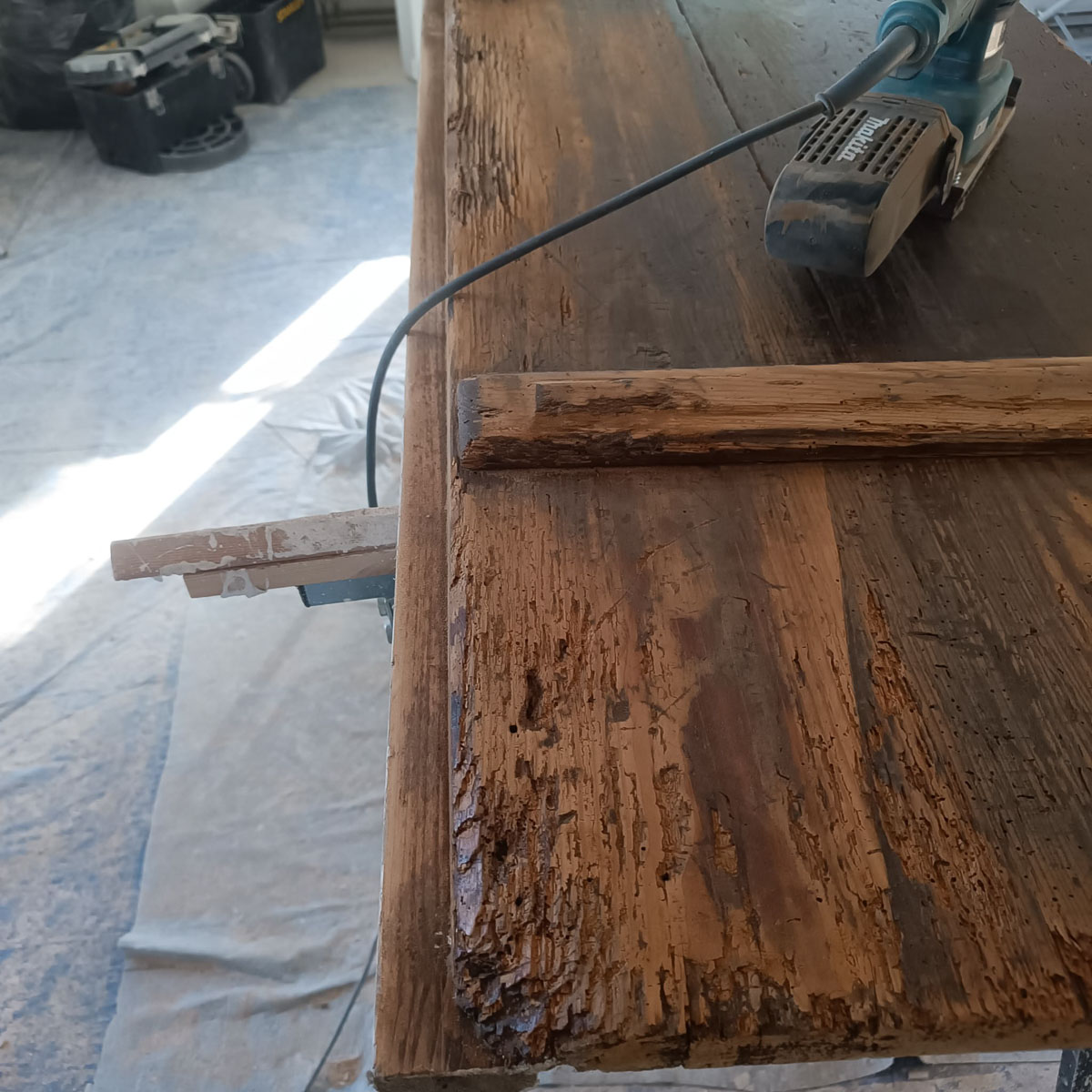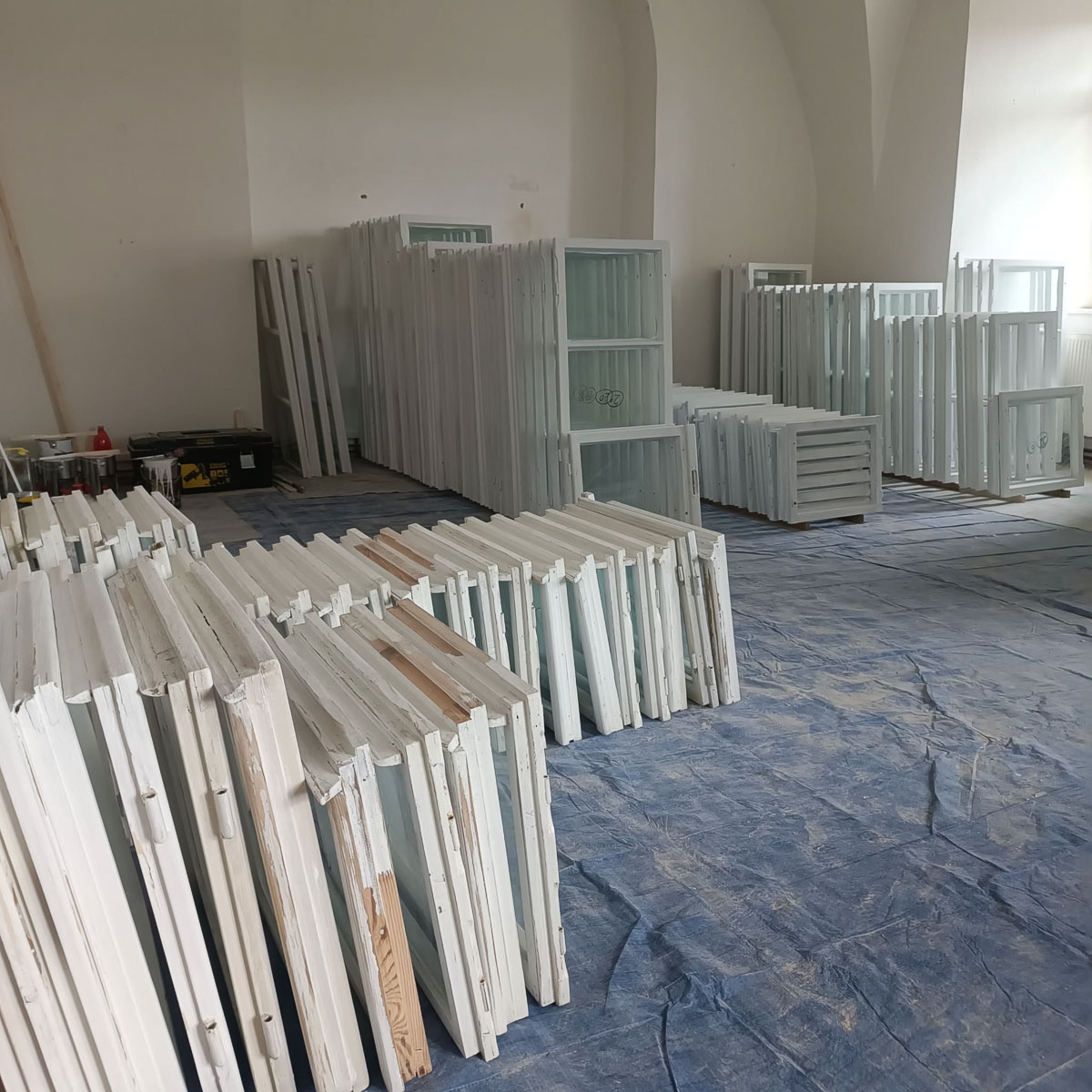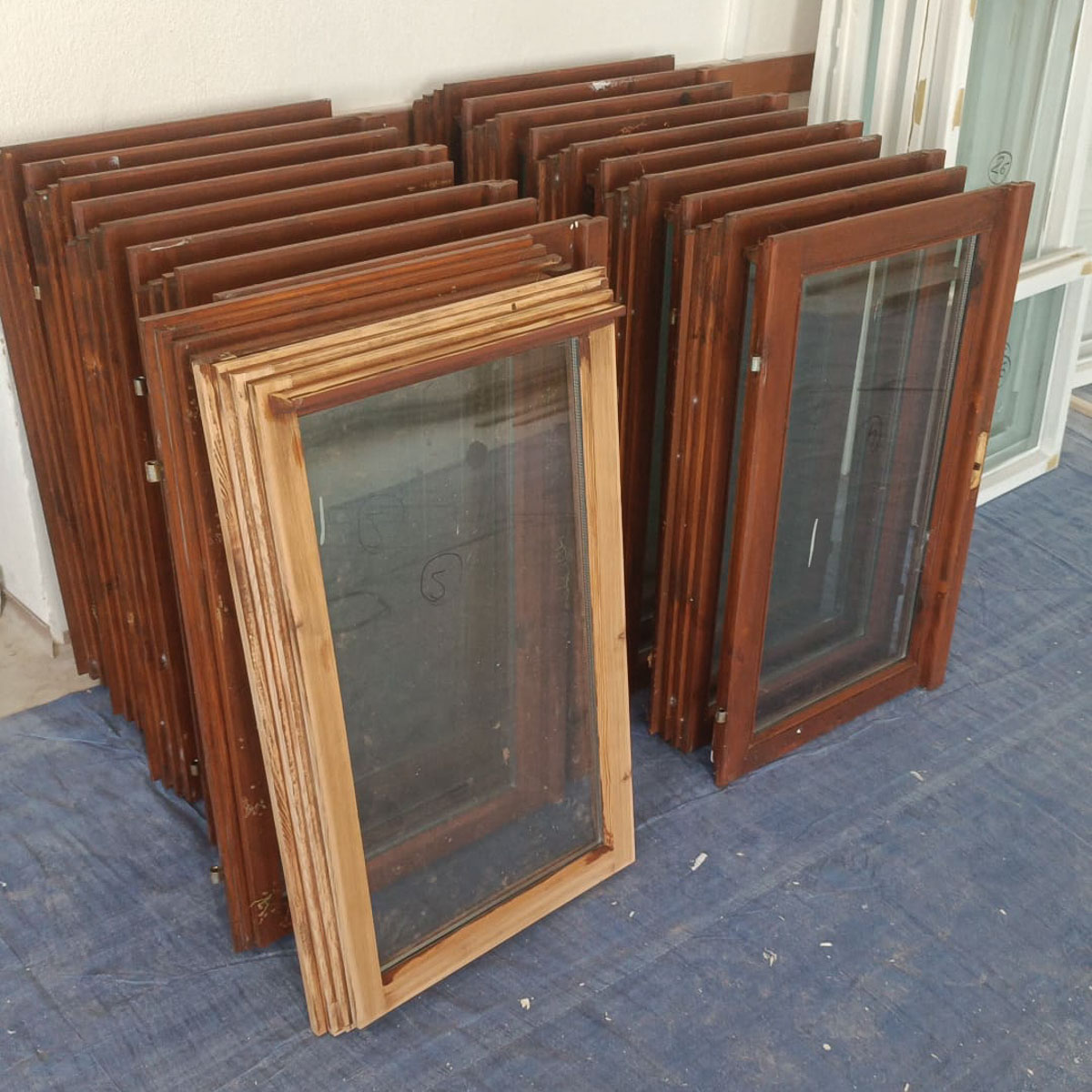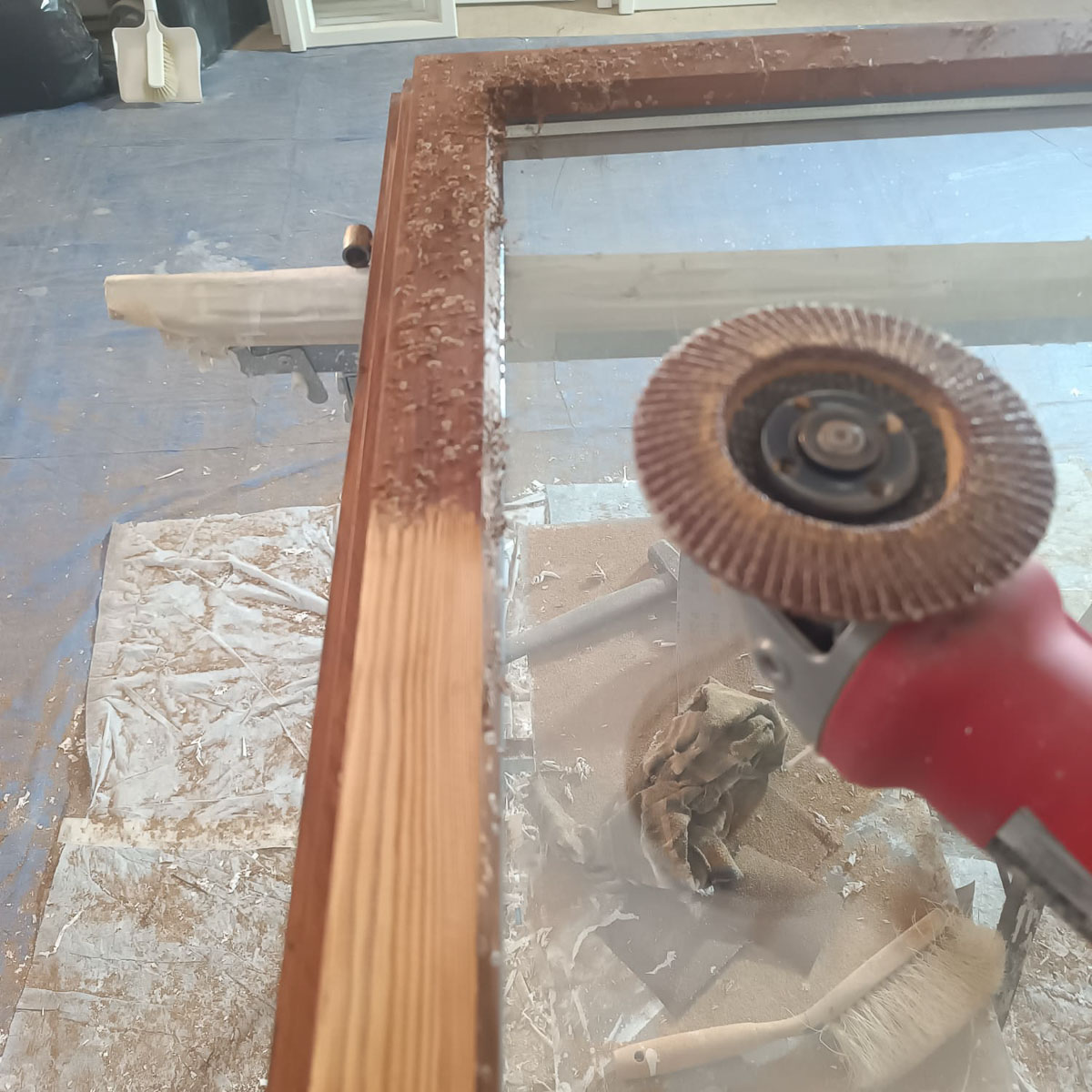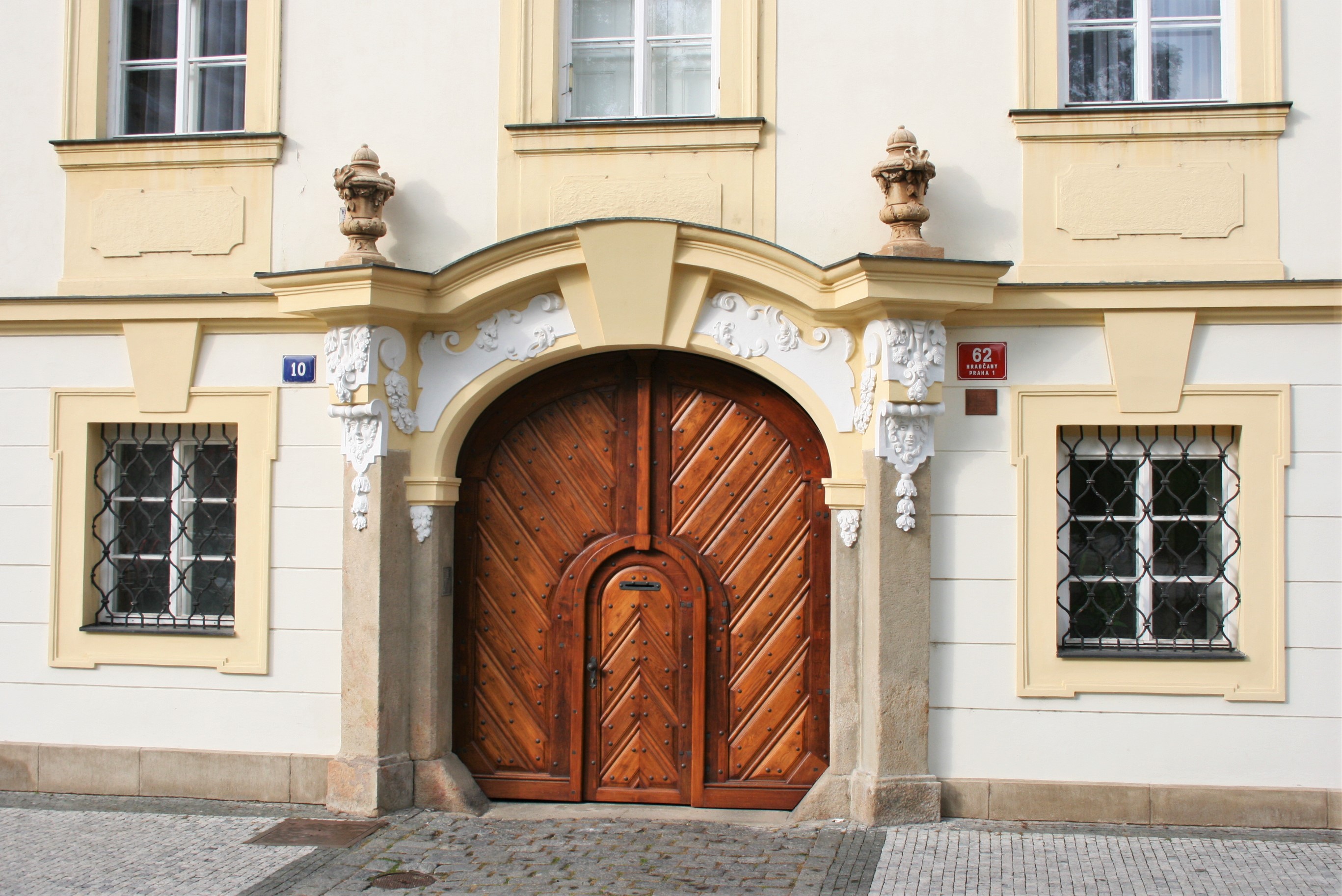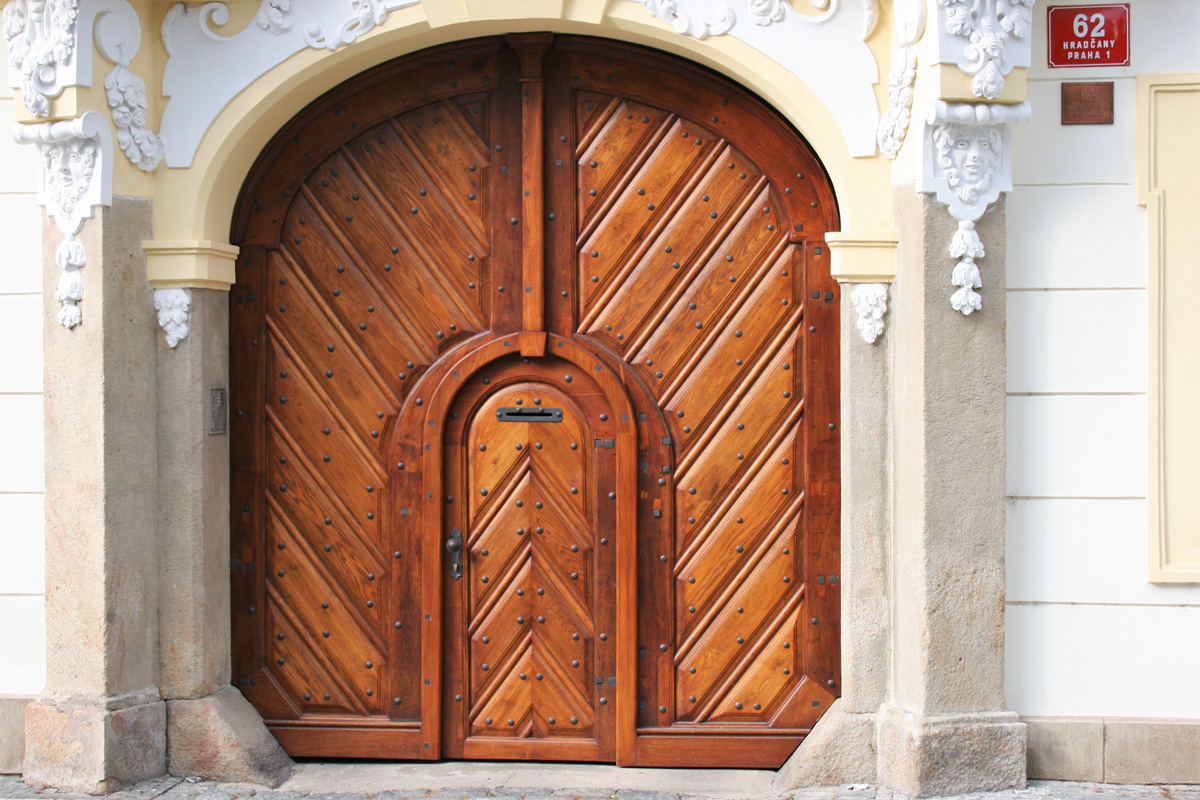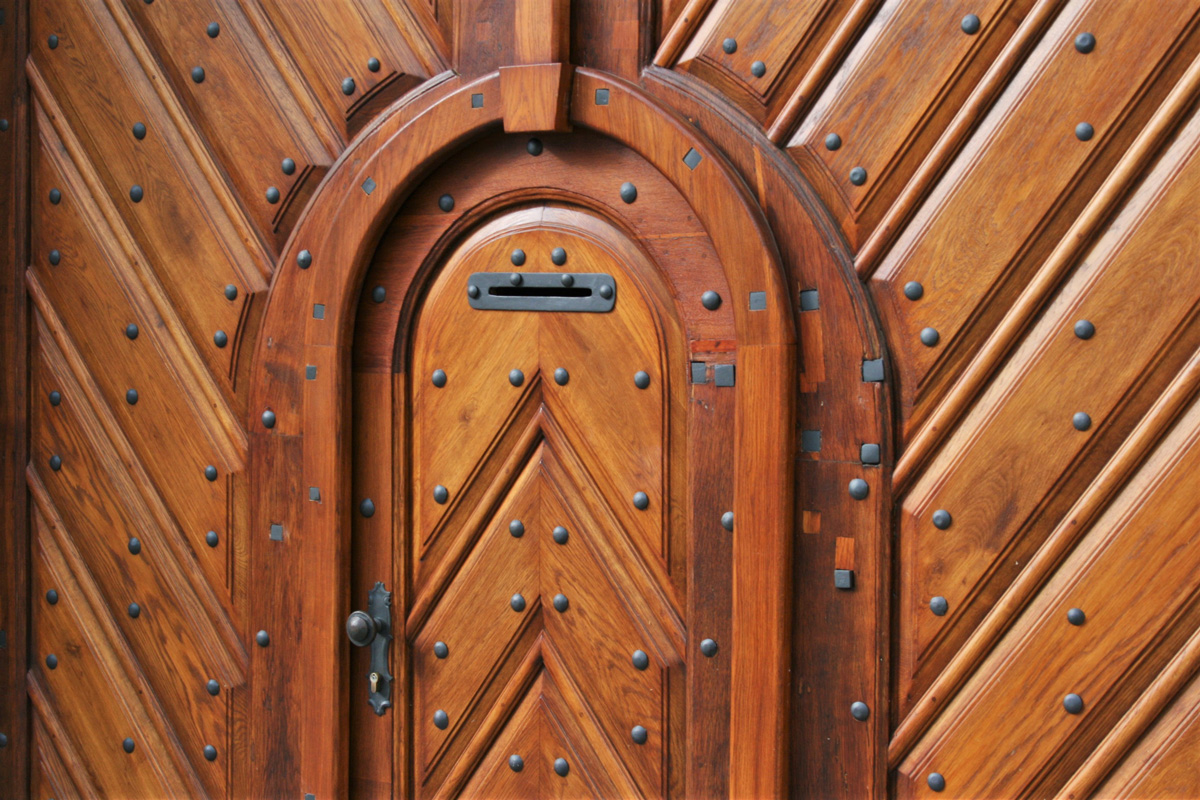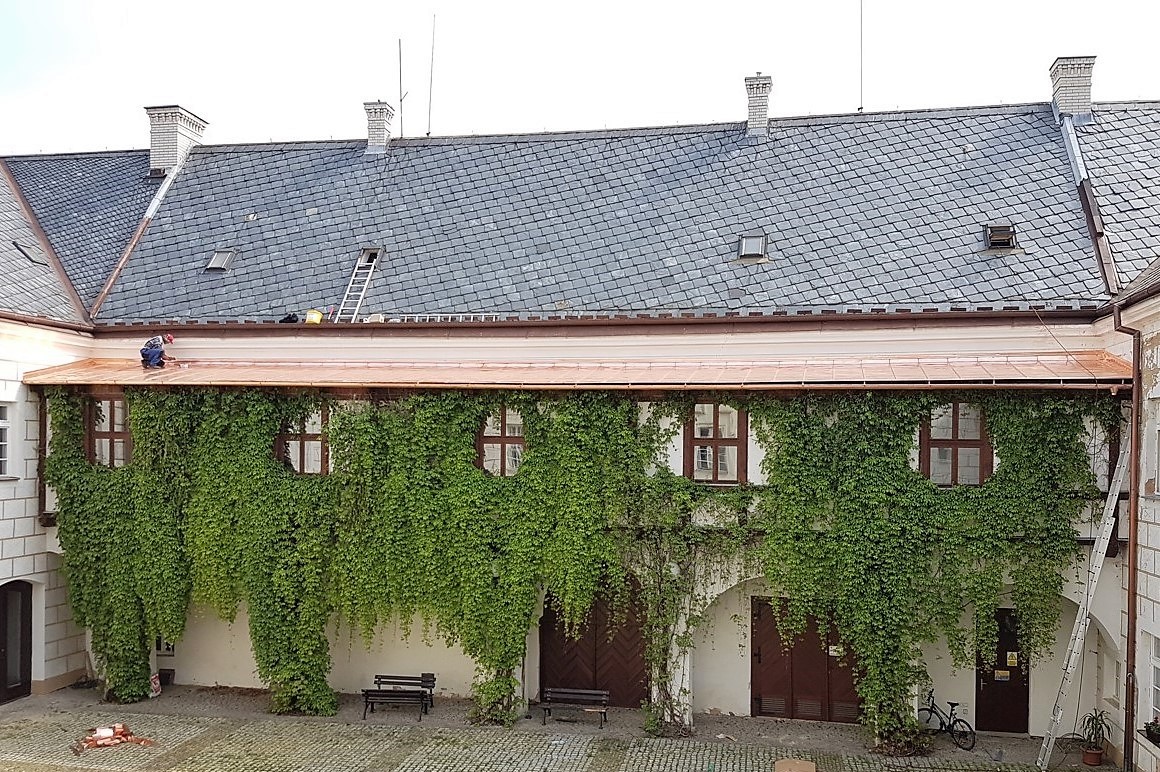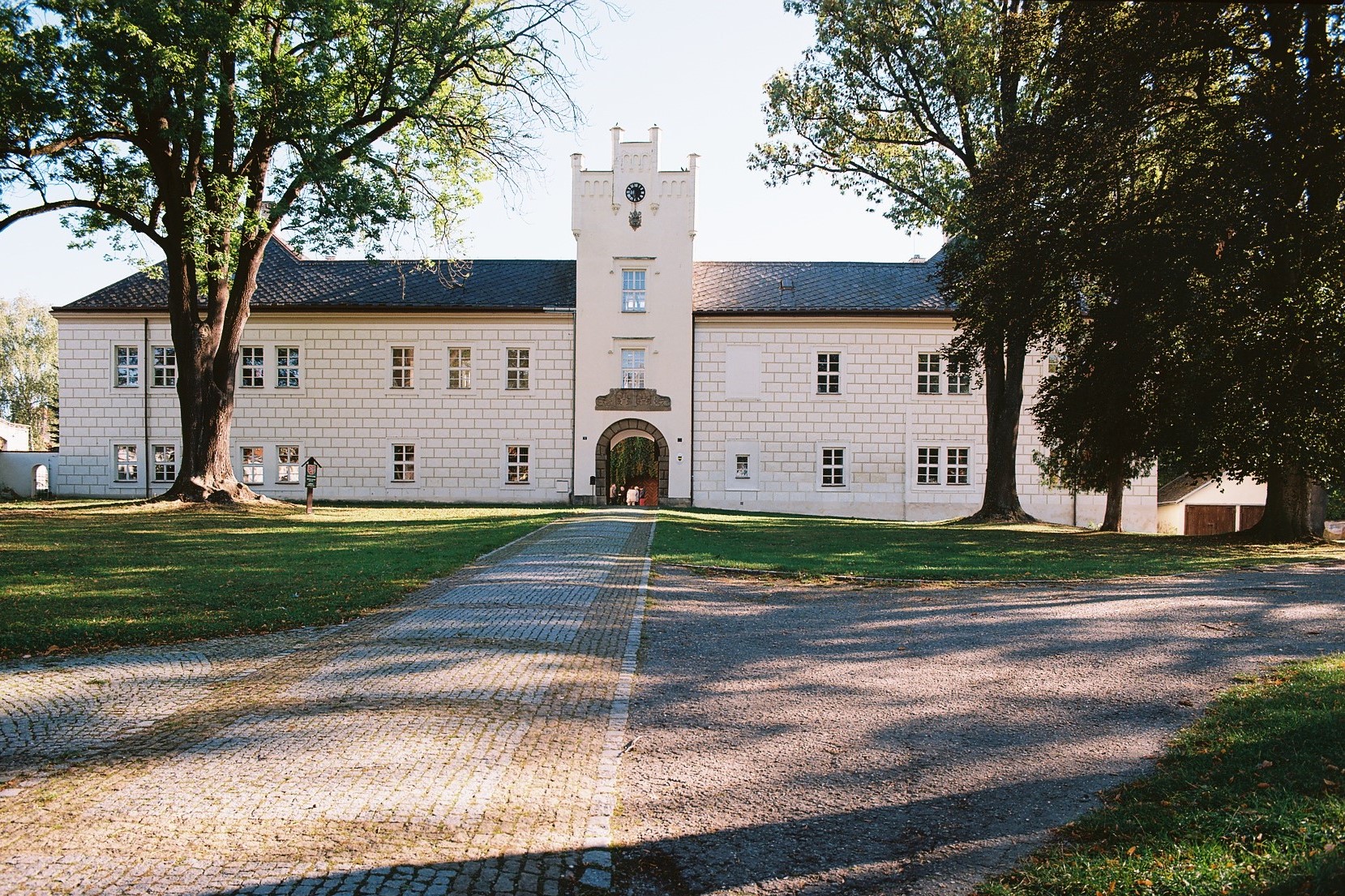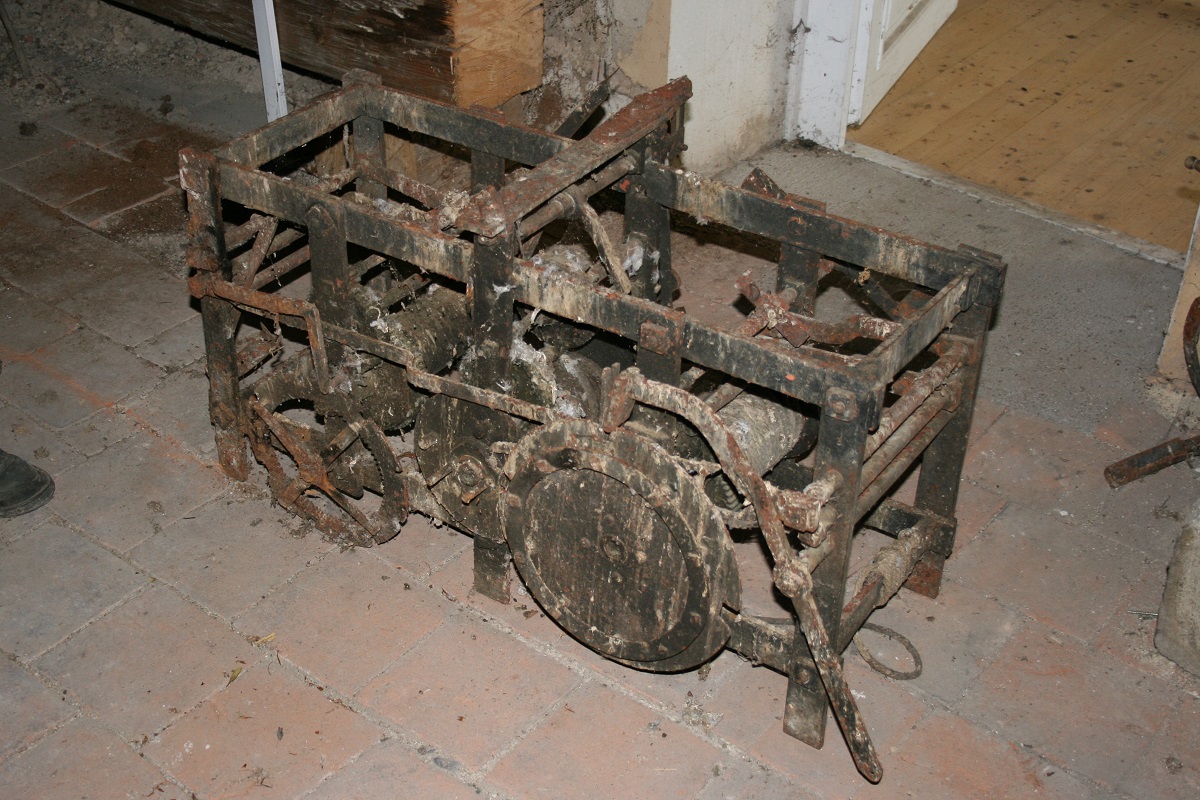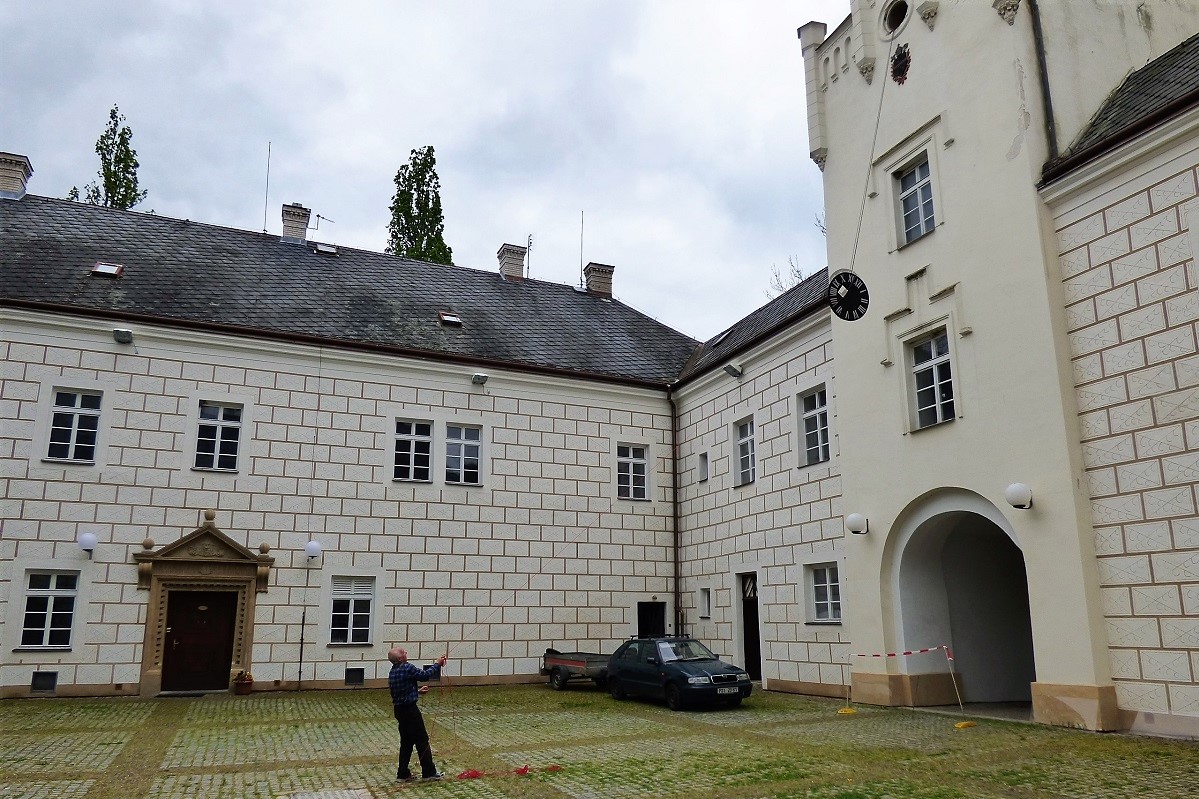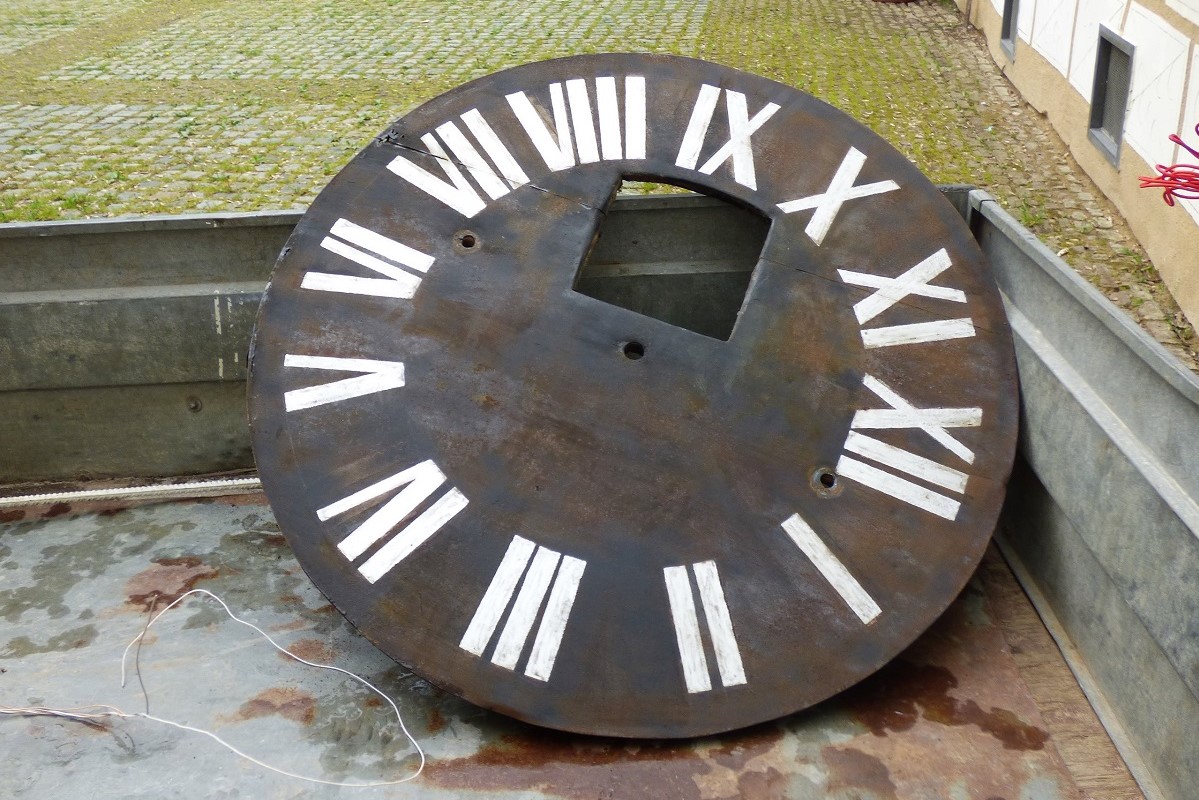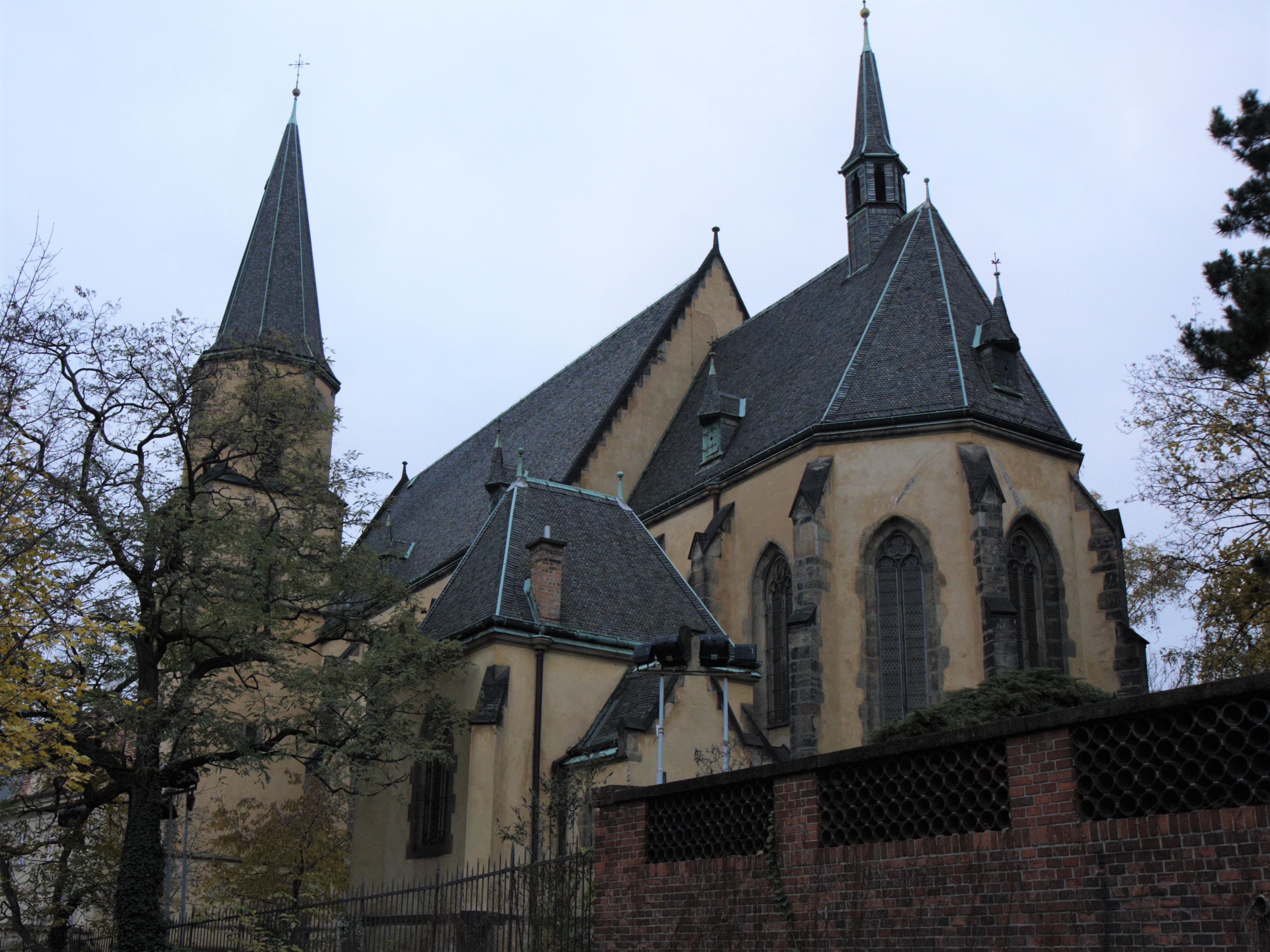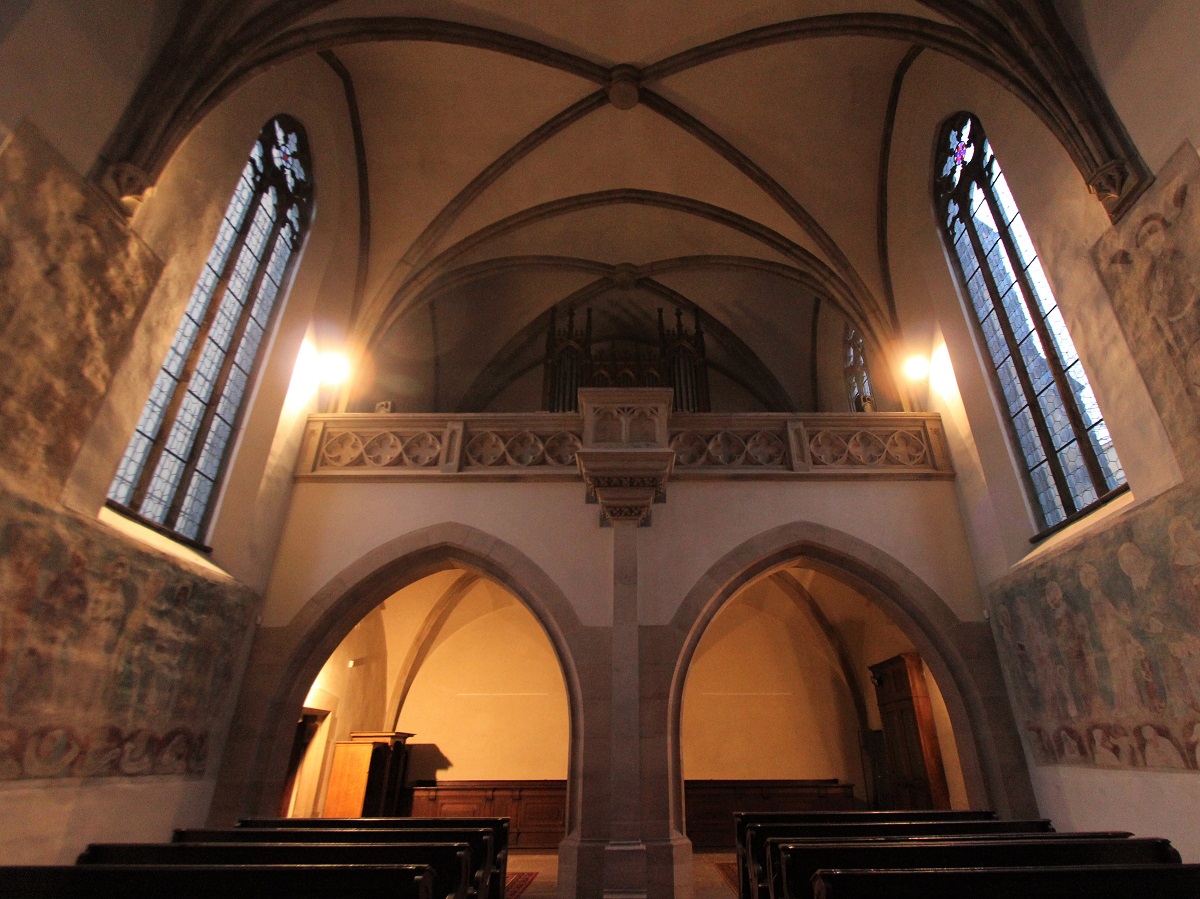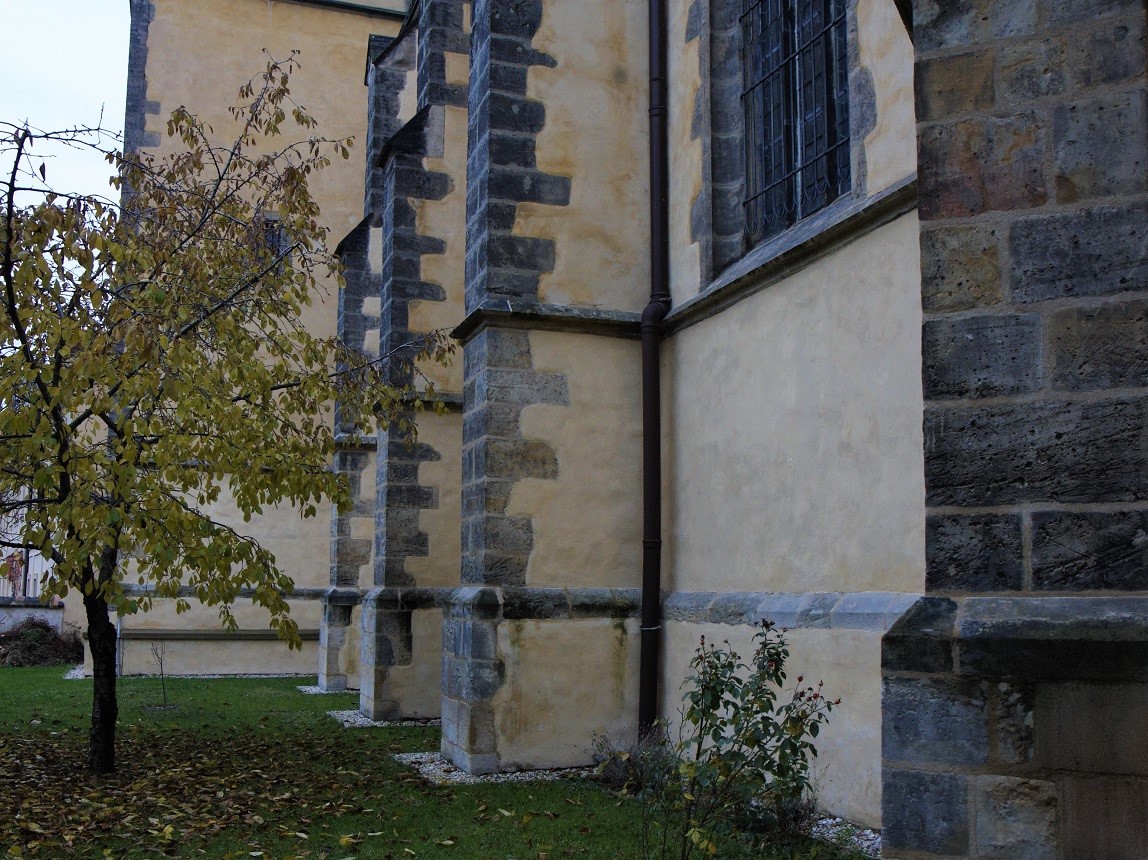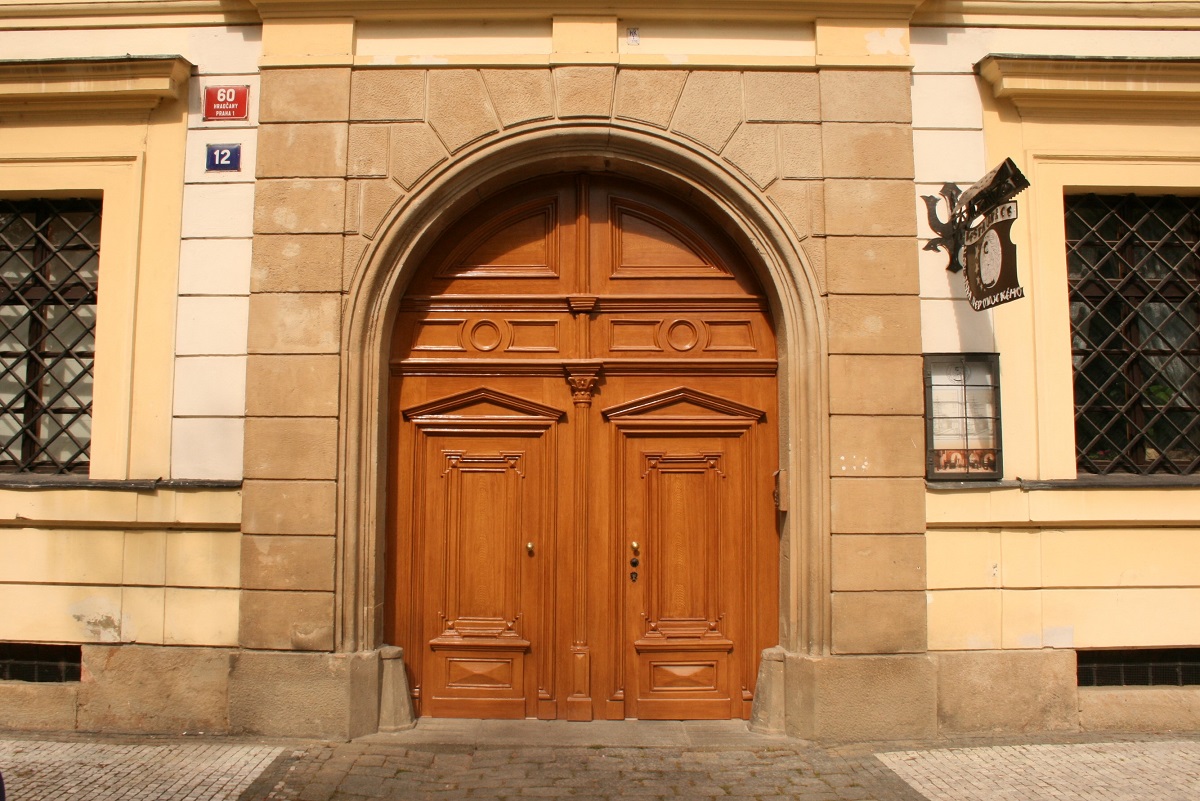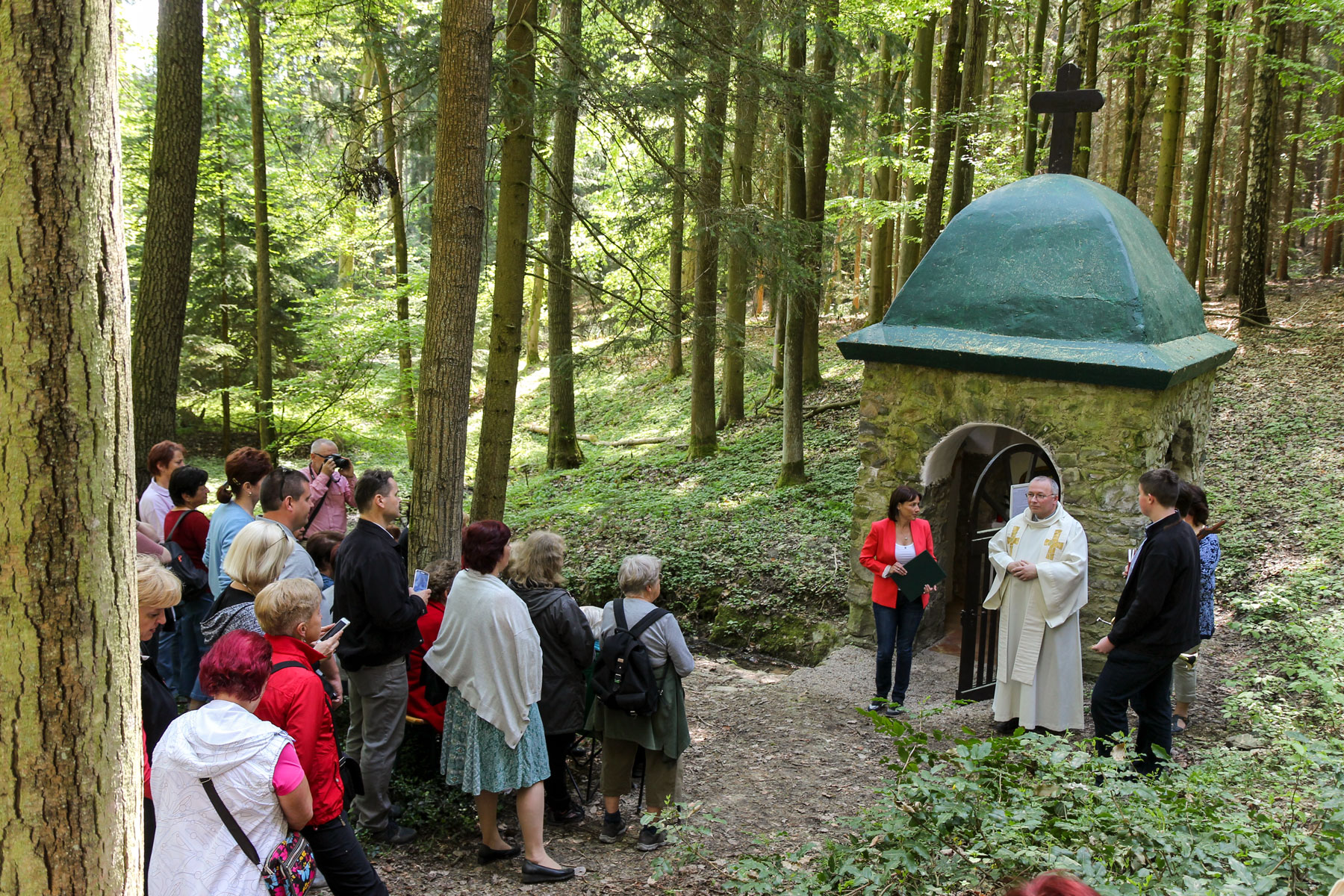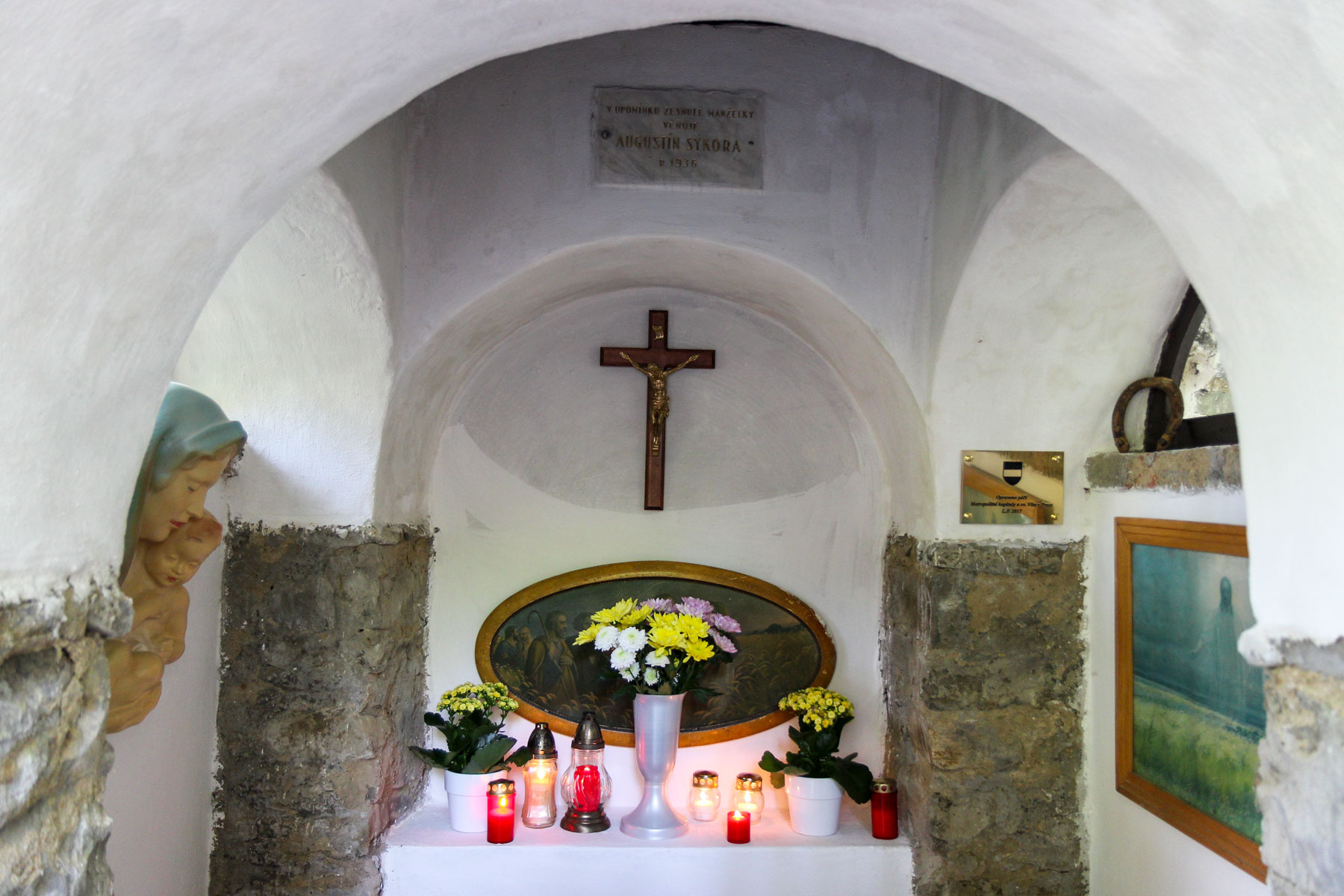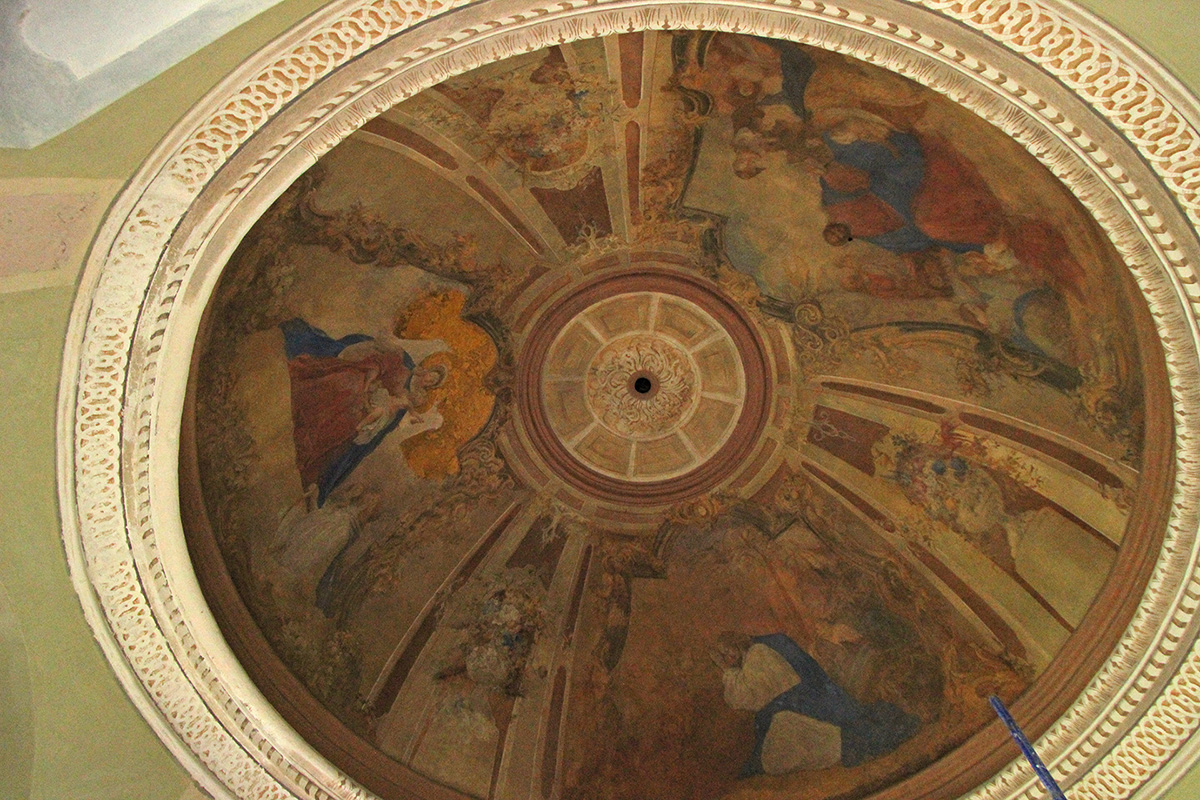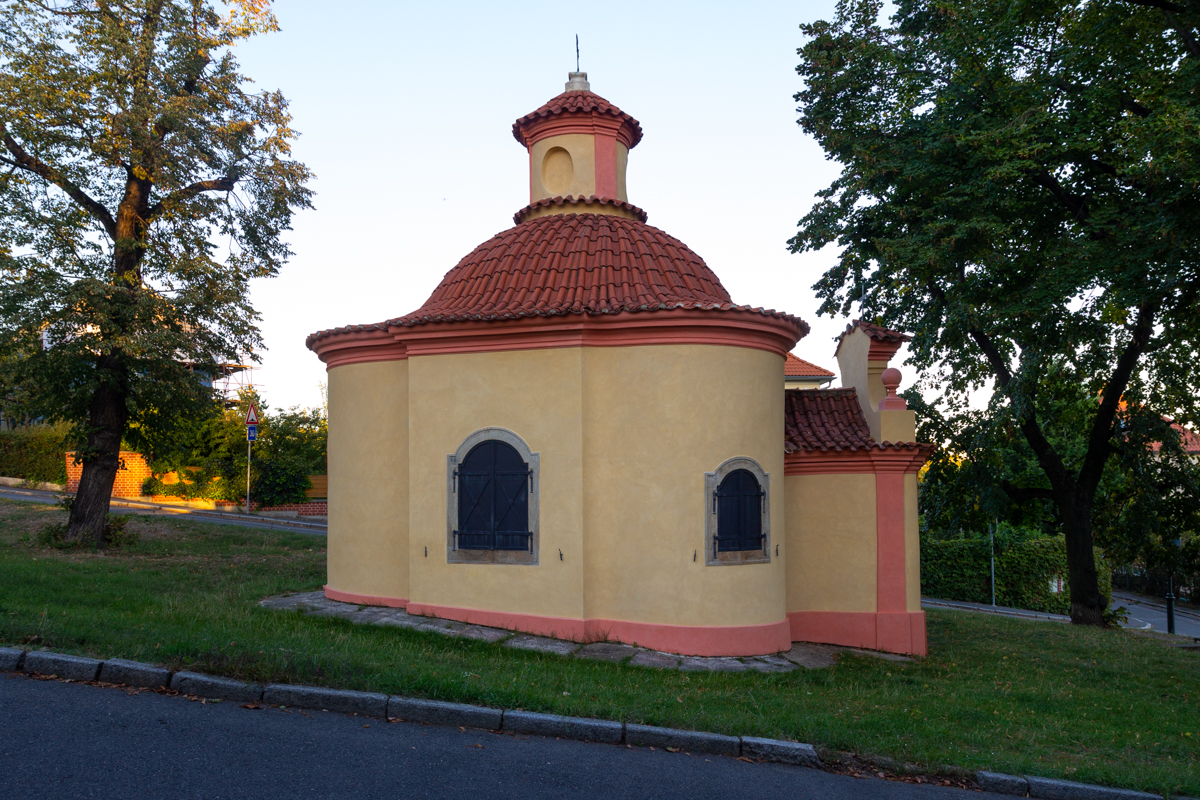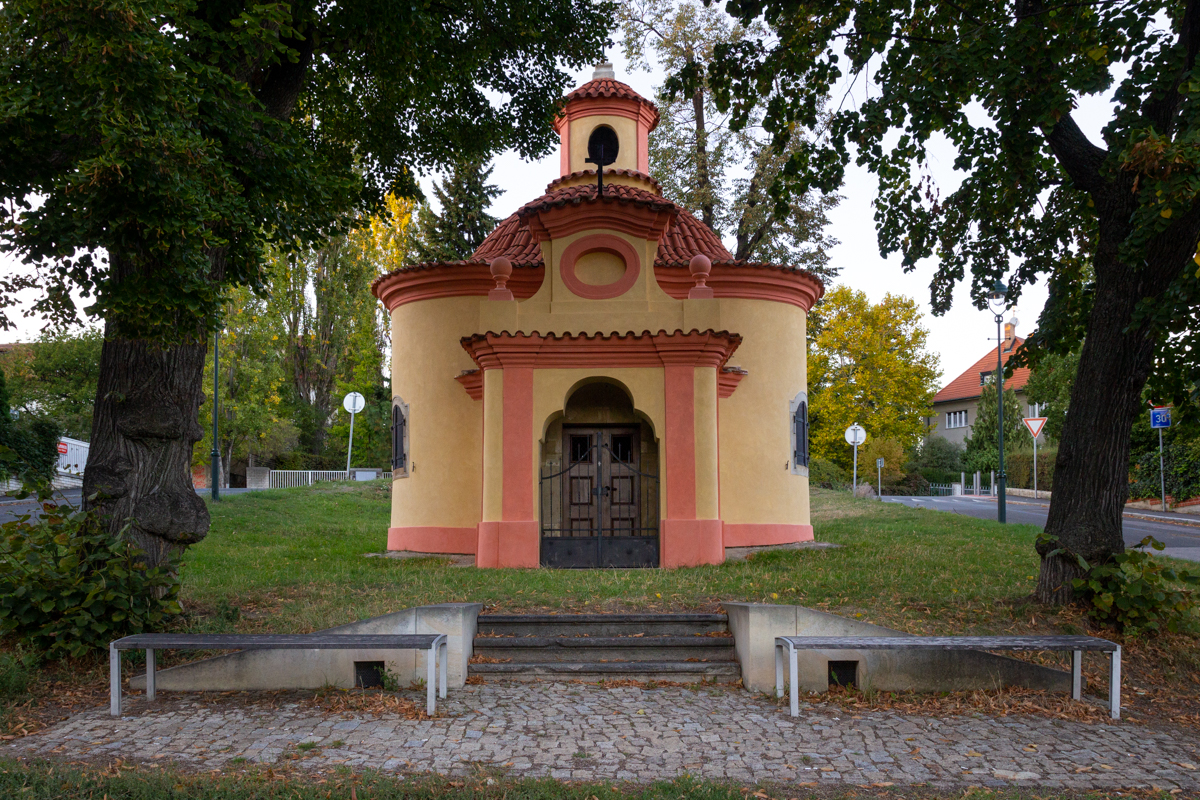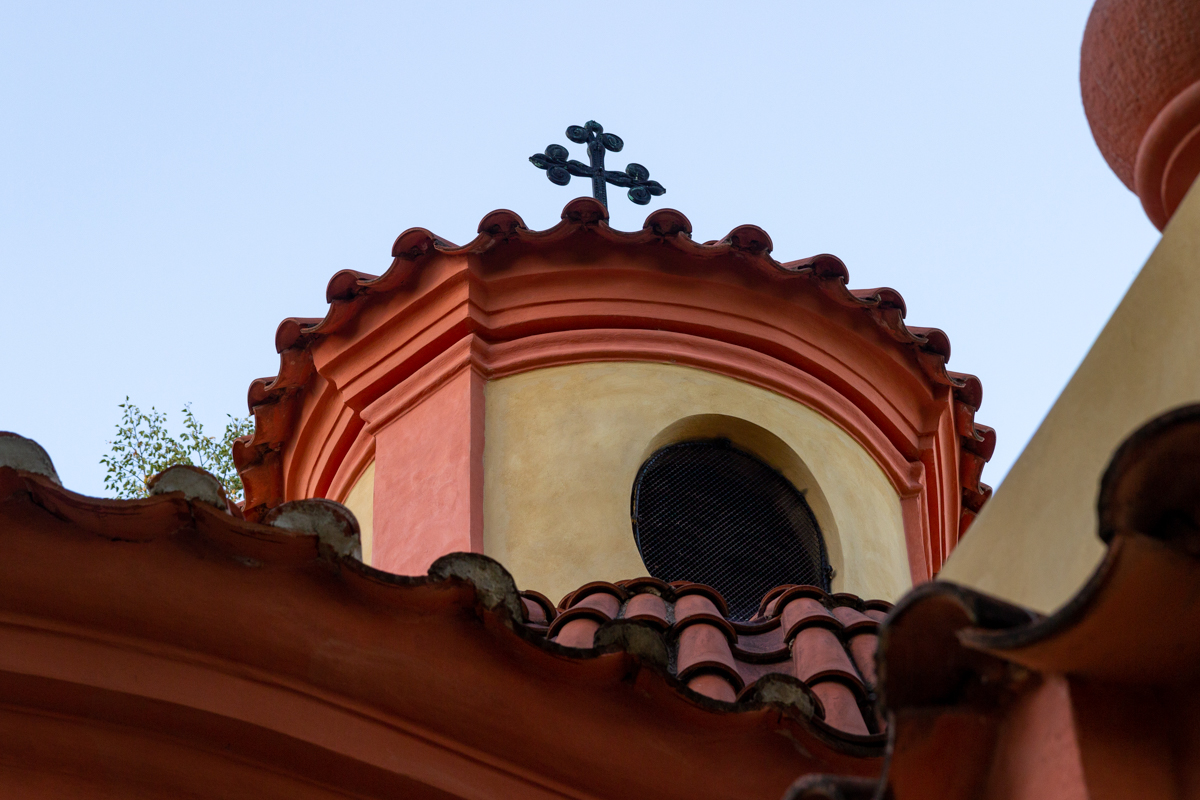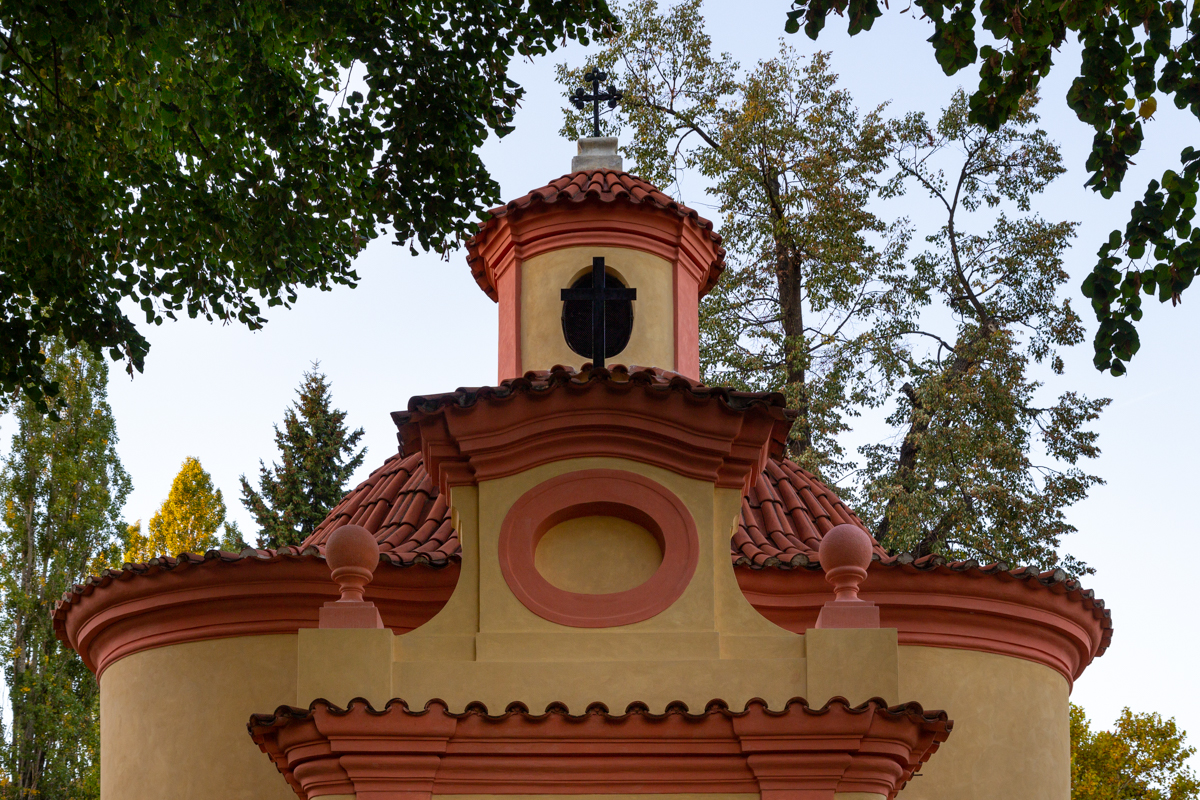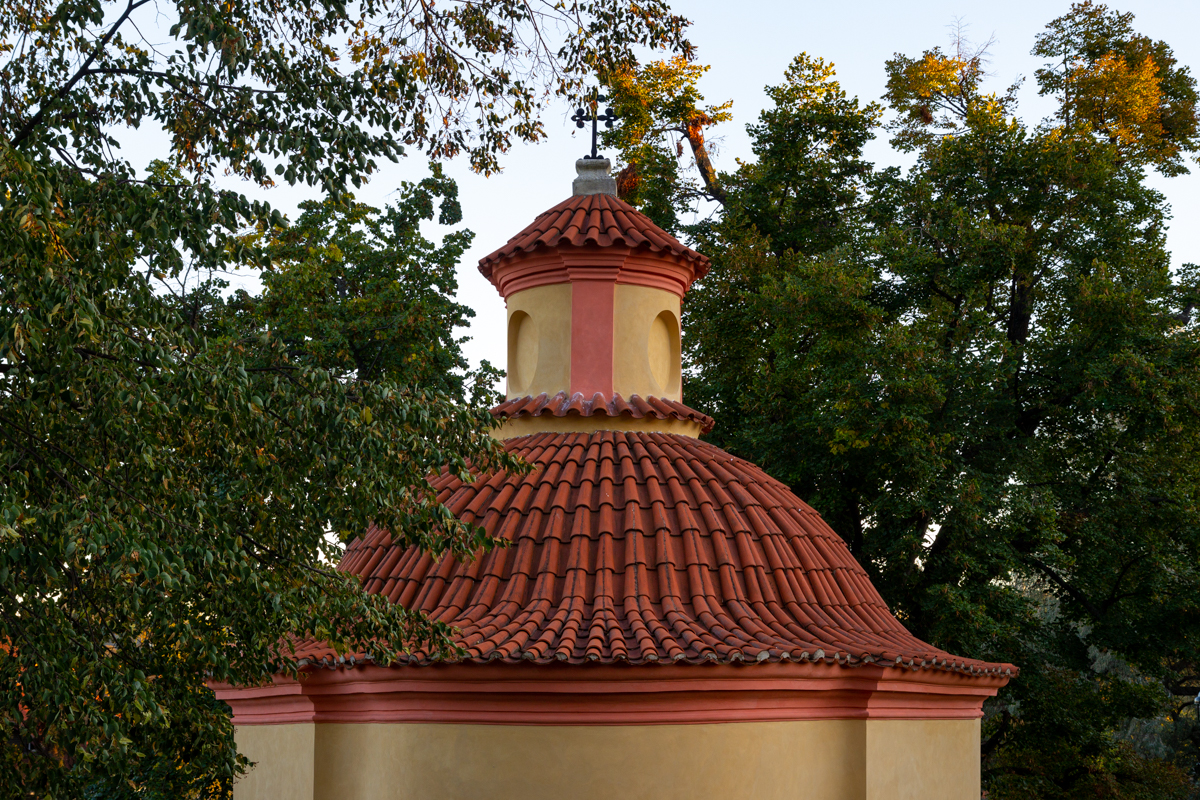Restoration of monuments
The metropolitan chapter of the St. Vitus in Prague is the owner of a number of cultural
monuments that are under its management. The goal is the maintenance and gentle restoration of
the monument, with the maximum effort for authenticity and artistic-cultural value, according to the
modern approach of monument maintenance. The chapter understands the ownership of any
cultural monument as a continuous care for the public cultural heritage, and it strives to approach it
in the wider context, through a close interdisciplinary cooperation of the architect, restorer and the
representatives of the particular institutions.
Nové proboštství rekonstrukce a dostavba
Od roku 2016 připravovala Metropolitní kapitula projekt rekonstrukce budovy Nového proboštství na náměstí U sv. Jiří, který jí byl jakožto zlomek jejího historického majetku v areálu Pražského hradu toho roku vrácen, samotnou realizaci rekonstrukce a dostavby objektu zahájila kapitula v roce 2020. V roce 2023 byly stavební práce úspěšně dokončeny, objekt byl zkolaudován a slavnostně požehnán arcibiskupem pražským Mons. Janem Graubnerem za účasti prezidenta republiky Petra Pavla, kanovníků metropolitní kapituly a dalších hostů. V prosinci 2023 bylo veřejnosti zpřístupněno nádvoří objektu a západní přístavba, ve které se nachází kavárna. Postupně budou pro veřejnost otevřeny i východní přístavba a obchod v přízemí historické budovy.
Objekt Nového proboštství byl vystavěn na zakázku pražské metropolitní kapituly dómským stavitelem Josefem Mockerem ve II. polovině 19. století na místě tří starších budov a až do roku 1948 sloužil jako rezidence kapitulního probošta. Poté byl kapitule státem zabaven, až do jeho navrácení kapitule chátral a byl užíván pouze utilitárně jako technické zázemí Pražského hradu. V 60. letech 20. století byla stržena jeho dvorní hospodářská křídla, nádvoří bylo odděleno od parkánové zdi hlubokým výkopem a počítalo se dokonce s úplnou demolicí celého objektu.
Po navrácení budovy zahájila Metropolitní kapitula intenzivní přípravnou činnost, která zahrnovala geodetické zaměření celého objektu, archivní průzkumy, podrobný stavebně-technický průzkum, tvorbu zadání, výběr projektanta a zpracování všech stupňů projektové dokumentace a vyřízení všech povolení a správních rozhodnutí. Generálním projektantem se stala společnost Studio acht, spol. s r.o., vedená zkušeným architektem Václavem Hlaváčkem. Souběžně však musela kapitula vyvinout značné úsilí pro zajištění finančních prostředků, neboť veškeré náklady související s rekonstrukcí hradila výhradně z vlastních zdrojů, tj. z prostředků získaných její hospodářskou činností. Na jaře roku 2020 zahájila kapitula výběr zhotovitele, kterým se stala zkušená brněnská společnost Archatt, s.r.o., která již dříve úspěšně realizovala řadu stavebních zakázek v areálu Pražského hradu.
V rámci rekonstrukce byla v první řadě zachráněna samotná stavební podstata objektu. Byly sanovány statické poruchy, řešeno odvlhčení zděných konstrukcí pomocí provětrávaných kanálů, provedena komplexní rekonstrukce krovu včetně bednění, pokládka nové hydroizolace a nové břidlice v kombinaci černá a šedozelená, replikující původní závěskový motiv. Byla provedena rovněž replika původní omítané severní dvorní fasády, ze které se dochovaly pouze nesoudržné fragmenty. Jižní fasáda, tvořená režným cihelným zdivem s kamennými prvky, byla vyčištěna, bylo opraveno spárování a doplněny všechny chybějící kamenné i cihelné zdící prvky. Veškeré klempířské, kovářské a pasířské prvky byly opraveny nebo nahrazeny replikami, bylo obnoveno zlacení makovic a hrotnic a v neposlední řadě byla provedena také oprava soklu.
V interiérech budovy byla většina původních prvků zachráněna a zrestaurována. Podařilo se zachránit a zrestaurovat téměř všechny interiérové dveře včetně původních povrchových úprav, stejně tak okna včetně kazetového obložení a okenic kromě vnějších dolních křídel, která byla nahrazena přesnými replikami. Podařilo se zachránit a obnovit oba dřevěné kazetové stropy v prvním patře budovy a většinu původních dřevěných parket. Barevné řešení stěn vychází z archivních průzkumů a porovnání Mockerovy plánové dokumentace s nálezy fragmentů původní výmalby na místě. Kompletně bylo replikováno barevné řešení stěn hlavního schodiště se šablonovou výmalbou a malířská výzdoba stropu jihozápadní rohové místnosti v prvním patře budovy. Restaurována byla také dochovaná kachlová kamna a byla zpět osazena obnovená původní vstupní i dvorní vrata. Objekt byl rovněž vybaven novými rozvody inženýrských sítí, které zcela chyběly nebo byly v havarijním stavu. S ohledem na zachování neporušené historické hmoty stavebních konstrukcí byly pro vedení inženýrských sítí využívány výhradně staré komínové průduchy a podlahové kanály.
Na místě původních dvorních hospodářských křídel byly v souladu s podmínkami památkové péče postaveny dvě novostavby respektující objem a tvar původních již dříve zbořených hospodářských budov. Nosným skeletem novostaveb jsou ocelové konstrukce, obvodový plášť je řešen jako lehký se zavěšeným obkladem střech i stěn zhotoveným z pískovcových desek. Příkop oddělující parkánovou zeď od nádvoří byl zastropen a nádvoří bylo opět propojeno s parkánovou zdí, kde vznikla vyhlídka do Jeleního příkopu a na Míčovnu Pražského hradu. Na nádvoří byla položena nová dlažba z mrákotínské žuly a byla zhotovena kašna s obeliskem a vykonzolovanou vyhlídkou dle návrhu hlavního architekta rekonstrukce Václava Hlaváčka, na kterém se podílel i současný děkan kapituly Ondřej Pávek. Kašna a vyhlídka jsou situovány v místě navrhovaného dřevěného altánku, který se objevil v Mockerově plánové dokumentaci, nikdy však nebyl realizován. Na přelivu kašny jsou z bronzu zhotovena jména tří hlavních patronů katedrály sv. Víta v latinském jazyce – Wenceslaus, Vitus, Adalbertus (Václav, Vít, Vojtěch). Hlavní osa budovy procházející průjezdem přes kříž v obelisku směřuje k Levému Hradci a Budči, místům, kde byl sv. Vojtěch zvolen druhým pražským biskupem a kde byl vychováván hlavní patron české země sv. Václav. Na kamenných deskách za kašnou je napsána báseň probošta metropolitní kapituly Jana Lebedy vzývající sv. Vojtěcha.
V rámci stavebních prací provedl Archeologický ústav Akademie věd ČR záchranný archeologický výzkum a kapitula zajistila záchranu a konzervaci vzácných archeologických nálezů, zejména zdiva pozdně gotické hrady vybudované Benediktem Rejtem za vlády Jagellonců a dalších fragmentů převážně gotických a renesančních objektů, které byly odborně ošetřeny, zakonzervovány a zdokumentovány.
Jedná se tak o ojedinělou ukázku stavebních prací, které znamenaly záchranu a obnovu zcela unikátního objektu známého architekta Josefa Mockera a zároveň o dostavbu torza do nedávna zchátralé budovy v areálu Pražského hradu.
Objekt Nového proboštství byl vystavěn na zakázku pražské metropolitní kapituly dómským stavitelem Josefem Mockerem ve II. polovině 19. století na místě tří starších budov a až do roku 1948 sloužil jako rezidence kapitulního probošta. Poté byl kapitule státem zabaven, až do jeho navrácení kapitule chátral a byl užíván pouze utilitárně jako technické zázemí Pražského hradu. V 60. letech 20. století byla stržena jeho dvorní hospodářská křídla, nádvoří bylo odděleno od parkánové zdi hlubokým výkopem a počítalo se dokonce s úplnou demolicí celého objektu.
Po navrácení budovy zahájila Metropolitní kapitula intenzivní přípravnou činnost, která zahrnovala geodetické zaměření celého objektu, archivní průzkumy, podrobný stavebně-technický průzkum, tvorbu zadání, výběr projektanta a zpracování všech stupňů projektové dokumentace a vyřízení všech povolení a správních rozhodnutí. Generálním projektantem se stala společnost Studio acht, spol. s r.o., vedená zkušeným architektem Václavem Hlaváčkem. Souběžně však musela kapitula vyvinout značné úsilí pro zajištění finančních prostředků, neboť veškeré náklady související s rekonstrukcí hradila výhradně z vlastních zdrojů, tj. z prostředků získaných její hospodářskou činností. Na jaře roku 2020 zahájila kapitula výběr zhotovitele, kterým se stala zkušená brněnská společnost Archatt, s.r.o., která již dříve úspěšně realizovala řadu stavebních zakázek v areálu Pražského hradu.
V rámci rekonstrukce byla v první řadě zachráněna samotná stavební podstata objektu. Byly sanovány statické poruchy, řešeno odvlhčení zděných konstrukcí pomocí provětrávaných kanálů, provedena komplexní rekonstrukce krovu včetně bednění, pokládka nové hydroizolace a nové břidlice v kombinaci černá a šedozelená, replikující původní závěskový motiv. Byla provedena rovněž replika původní omítané severní dvorní fasády, ze které se dochovaly pouze nesoudržné fragmenty. Jižní fasáda, tvořená režným cihelným zdivem s kamennými prvky, byla vyčištěna, bylo opraveno spárování a doplněny všechny chybějící kamenné i cihelné zdící prvky. Veškeré klempířské, kovářské a pasířské prvky byly opraveny nebo nahrazeny replikami, bylo obnoveno zlacení makovic a hrotnic a v neposlední řadě byla provedena také oprava soklu.
V interiérech budovy byla většina původních prvků zachráněna a zrestaurována. Podařilo se zachránit a zrestaurovat téměř všechny interiérové dveře včetně původních povrchových úprav, stejně tak okna včetně kazetového obložení a okenic kromě vnějších dolních křídel, která byla nahrazena přesnými replikami. Podařilo se zachránit a obnovit oba dřevěné kazetové stropy v prvním patře budovy a většinu původních dřevěných parket. Barevné řešení stěn vychází z archivních průzkumů a porovnání Mockerovy plánové dokumentace s nálezy fragmentů původní výmalby na místě. Kompletně bylo replikováno barevné řešení stěn hlavního schodiště se šablonovou výmalbou a malířská výzdoba stropu jihozápadní rohové místnosti v prvním patře budovy. Restaurována byla také dochovaná kachlová kamna a byla zpět osazena obnovená původní vstupní i dvorní vrata. Objekt byl rovněž vybaven novými rozvody inženýrských sítí, které zcela chyběly nebo byly v havarijním stavu. S ohledem na zachování neporušené historické hmoty stavebních konstrukcí byly pro vedení inženýrských sítí využívány výhradně staré komínové průduchy a podlahové kanály.
Na místě původních dvorních hospodářských křídel byly v souladu s podmínkami památkové péče postaveny dvě novostavby respektující objem a tvar původních již dříve zbořených hospodářských budov. Nosným skeletem novostaveb jsou ocelové konstrukce, obvodový plášť je řešen jako lehký se zavěšeným obkladem střech i stěn zhotoveným z pískovcových desek. Příkop oddělující parkánovou zeď od nádvoří byl zastropen a nádvoří bylo opět propojeno s parkánovou zdí, kde vznikla vyhlídka do Jeleního příkopu a na Míčovnu Pražského hradu. Na nádvoří byla položena nová dlažba z mrákotínské žuly a byla zhotovena kašna s obeliskem a vykonzolovanou vyhlídkou dle návrhu hlavního architekta rekonstrukce Václava Hlaváčka, na kterém se podílel i současný děkan kapituly Ondřej Pávek. Kašna a vyhlídka jsou situovány v místě navrhovaného dřevěného altánku, který se objevil v Mockerově plánové dokumentaci, nikdy však nebyl realizován. Na přelivu kašny jsou z bronzu zhotovena jména tří hlavních patronů katedrály sv. Víta v latinském jazyce – Wenceslaus, Vitus, Adalbertus (Václav, Vít, Vojtěch). Hlavní osa budovy procházející průjezdem přes kříž v obelisku směřuje k Levému Hradci a Budči, místům, kde byl sv. Vojtěch zvolen druhým pražským biskupem a kde byl vychováván hlavní patron české země sv. Václav. Na kamenných deskách za kašnou je napsána báseň probošta metropolitní kapituly Jana Lebedy vzývající sv. Vojtěcha.
V rámci stavebních prací provedl Archeologický ústav Akademie věd ČR záchranný archeologický výzkum a kapitula zajistila záchranu a konzervaci vzácných archeologických nálezů, zejména zdiva pozdně gotické hrady vybudované Benediktem Rejtem za vlády Jagellonců a dalších fragmentů převážně gotických a renesančních objektů, které byly odborně ošetřeny, zakonzervovány a zdokumentovány.
Jedná se tak o ojedinělou ukázku stavebních prací, které znamenaly záchranu a obnovu zcela unikátního objektu známého architekta Josefa Mockera a zároveň o dostavbu torza do nedávna zchátralé budovy v areálu Pražského hradu.
Oprava fasád kapitulních domů na Hradčanském náměstí
Metropolitní kapitula je vlastníkem historických objektů v severní frontě Hradčanského náměstí, které mají úzkou vazbu ke stavbě chrámu sv. Víta. Jedná se o domy s bohatou stavební historií, jejichž původ je doložen nejpozději v roce 1348, jednalo se např. o domy ředitelů stavby katedrály z řad kapitulních děkanů jako byl Beneš Krabice z Weitmile, Ondřej Kotlík nebo Václav z Radče, či o samotného Petra Parléře. Po velkém požáru Prahy v roce 1541 byly domy přestavovány do renesanční a později barokní a klasicistní podoby, přičemž se zejména v suterénních prostorách dochovala jejich původní gotická hmota.
V letech 2022 a 2023 realizuje Metropolitní kapitula opravu fasád objektů č.p. 58/14 a č.p. 60/12 (kapitulní dům a někdejší kapitulní děkanství) částečně s přispěním grantu Magistrátu hlavního města Prahy z Programu pro vlastníky památkově významných objektů. V roce 2022 byla provedena kompletní oprava fasád objektu č.p. 58/14 a oprava severní fasády objektu č.p. 60/12, v roce 2023 navázaly práce na opravě jižní fasády objektu č.p. 60/12 včetně výměny dožilých oken. Z fasád byly odstraněny veškeré nesoudržné a poškozené části, bylo provedeno kompletní omytí a oškrábání novodobých vrstev. Byla provedena oprava všech defektů, zejména trhlin, doplněna jádrová omítka a chybějící štukové prvky jako např. nárožní bosáže, rustiky a zrcátka. Finální povrchová úprava je řešena vápennými barvami a plochy mimo aktivní prvky technologií probarveného štuku. Dožilá jednoduchá okna z 80. let 20. století jsou nahrazena kvalitními dubovými replikami klasicistních dřevěných špaletových oken s profilovanými klapačkami. Většina klempířských prvků byla vyměněna. Nové barevné řešení fasád bylo navrženo v souladu s nálezy původních barevných vrstev a dobovým řešením barokních objektů a klasicistních paláců, bylo konzultováno a schváleno zástupci památkové péče. Obnovou fasád uvedených objektů bylo zajištěno významné prodloužení jejich životnosti, byly odstraněny rozsáhlé defekty a vady, odstraněny pozdější nevhodné úpravy a objektům byla navrácena podoba odpovídají jejich dobovému charakteru a architektonickému ztvárnění.
V letech 2022 a 2023 realizuje Metropolitní kapitula opravu fasád objektů č.p. 58/14 a č.p. 60/12 (kapitulní dům a někdejší kapitulní děkanství) částečně s přispěním grantu Magistrátu hlavního města Prahy z Programu pro vlastníky památkově významných objektů. V roce 2022 byla provedena kompletní oprava fasád objektu č.p. 58/14 a oprava severní fasády objektu č.p. 60/12, v roce 2023 navázaly práce na opravě jižní fasády objektu č.p. 60/12 včetně výměny dožilých oken. Z fasád byly odstraněny veškeré nesoudržné a poškozené části, bylo provedeno kompletní omytí a oškrábání novodobých vrstev. Byla provedena oprava všech defektů, zejména trhlin, doplněna jádrová omítka a chybějící štukové prvky jako např. nárožní bosáže, rustiky a zrcátka. Finální povrchová úprava je řešena vápennými barvami a plochy mimo aktivní prvky technologií probarveného štuku. Dožilá jednoduchá okna z 80. let 20. století jsou nahrazena kvalitními dubovými replikami klasicistních dřevěných špaletových oken s profilovanými klapačkami. Většina klempířských prvků byla vyměněna. Nové barevné řešení fasád bylo navrženo v souladu s nálezy původních barevných vrstev a dobovým řešením barokních objektů a klasicistních paláců, bylo konzultováno a schváleno zástupci památkové péče. Obnovou fasád uvedených objektů bylo zajištěno významné prodloužení jejich životnosti, byly odstraněny rozsáhlé defekty a vady, odstraněny pozdější nevhodné úpravy a objektům byla navrácena podoba odpovídají jejich dobovému charakteru a architektonickému ztvárnění.
Restaurování intarzovaného mobiliáře ve Staré sakristii
Od roku 2022 provádí Metropolitní kapitula restaurování historických skříní v jedné z historicky nejcennějších částí katedrály sv. Víta, Václava a Vojtěcha – Staré sakristii. Jedná se o prostor v původní gotické části chrámu, vystavěný částečně na základech obvodové stěny původního románského kapitulního domu, který byl součástí druhého kostela sv. Víta na Pražském hradě, tzv. Spytihněvovy baziliky. V tomto prostoru je zřetelná návaznost stavby Petra Parléře na část stavby vybudovanou jeho předchůdcem Matyášem z Arrasu. Jako jedna z mála prostor chrámu byla Stará sakristie zasažena pouze lehce velkým požárem Prahy v roce 1541. V důsledku toho se zde dochovaly původní dřevěné prvky, jako např. vstupní dveře z roku 1367 či gotické dveře do prostoru Staré klenotnice.
Vedle visutých svorníků patří k výrazným atributům tohoto prostoru dvojice velkých intarzovaných skříní, provedených v barokním slohu a instalovaných při západní a východní stěně sakristie. Skříně jsou bohatě dekorované řezbářskými prvky a intarziemi, střední tabernákly jsou uvnitř zlacené. Obě skříně slouží k uchovávání liturgických knih a předmětů.
V rámci restaurátorských prací byly skříně postupně rozebrány a převezeny do restaurátorské dílny. Zde byla provedena jejich odborná prohlídka a ošetření proti dřevokaznému hmyzu a houbám. Byly sejmuty pozdější nevhodné úpravy, doplněny chybějící řezbářské prvky, protézovány části poškozené dřevokaznými procesy a opraveny poškozené intarzie. Dále byly vyztuženy pojezdy zásuvek, vyspraveny trhliny, opraveny a vyrovnány závěsy dvířek a zámky. Nakonec byla provedena celková obnova a vyleštění povrchové úpravy; skříně byly instalovány zpět ve svém původním umístění. Veškeré restaurátorské práce byly prováděny pod dohledem Odboru památkové péče Kanceláře prezidenta republiky.
Vedle visutých svorníků patří k výrazným atributům tohoto prostoru dvojice velkých intarzovaných skříní, provedených v barokním slohu a instalovaných při západní a východní stěně sakristie. Skříně jsou bohatě dekorované řezbářskými prvky a intarziemi, střední tabernákly jsou uvnitř zlacené. Obě skříně slouží k uchovávání liturgických knih a předmětů.
V rámci restaurátorských prací byly skříně postupně rozebrány a převezeny do restaurátorské dílny. Zde byla provedena jejich odborná prohlídka a ošetření proti dřevokaznému hmyzu a houbám. Byly sejmuty pozdější nevhodné úpravy, doplněny chybějící řezbářské prvky, protézovány části poškozené dřevokaznými procesy a opraveny poškozené intarzie. Dále byly vyztuženy pojezdy zásuvek, vyspraveny trhliny, opraveny a vyrovnány závěsy dvířek a zámky. Nakonec byla provedena celková obnova a vyleštění povrchové úpravy; skříně byly instalovány zpět ve svém původním umístění. Veškeré restaurátorské práce byly prováděny pod dohledem Odboru památkové péče Kanceláře prezidenta republiky.
Příprava pro úpravu záp. kruchty v katedrále sv. Víta
V souvislosti s plánovanou instalací nových varhan proběhnou v katedrále svým rozsahem a charakterem unikátní stavební práce za účelem přípravy Západní kruchty a souvisejících prostor na základě projektové dokumentace, jejíž přípravu a zpracování na žádost J. Em. Dominika kardinála Duky a Nadačního fondu Svatovítské varhany od listopadu 2019 koordinovala a zajišťovala Metropolitní kapitula u sv. Víta v Praze pod vedením Ing. Ondřeje Stříteského v úzké spolupráci se Správou Pražského hradu a Odborem památkové péče Kanceláře prezidenta republiky. V rámci přípravy projektu byla řešena a projednávána řada specifických technických detailů, byly prováděny průzkumy kabelových tras a navrhována řešení silno- i slaboproudých rozvodů, zpracovávány restaurátorské průzkumy a záměry a hledána optimální řešení s ohledem na ochranu historických a umělecky cenných konstrukcí a prvků stavby. Záměr byl úspěšně projednán se všemi dotčenými orgány státní správy a Správou Pražského hradu, dne 24.12.2022 získal pravomocné stavební povolení, následně po dopracování dokumentace pro provádění stavby byla projektová dokumentace předána Správě Pražského hradu, která zajišťuje výběr zhotovitele v režimu veřejné zakázky a samotnou realizaci stavby. Předpokládaným termínem zahájení stavby je září 2023.
V rámci stavebních prací bude provedena oprava a zesílení dřevěné a železobetonové nosné konstrukce podlahy Západní kruchty, restaurátorské práce a obnova povrchů, instalace nového osvětlení a nových silno- a slaboproudých rozvodů v rámci Západní kruchty a dalších souvisejících prostor v katedrále a veškeré ostatní práce nezbytné k zajištění bezproblémové instalace a fungování nového nástroje. Zároveň bude provedena modernizace stávajícího systému ozvučení katedrály a kamerového systému pro varhaníka, bude realizováno kabelové propojení Západní kruchty a příčné lodi katedrály za účelem zřízení možnosti připojení mobilního hracího stolu, který umožní současnou hru varhaníka a symfonického orchestru.
V průběhu provádění stavebních prací se nepočítá s významným omezením liturgického ani návštěvnického provozu. Podrobnější informace o průběhu stavby a případných dopadech do provozu katedrály budou upřesněny v souvislosti s předáním staveniště.
V rámci stavebních prací bude provedena oprava a zesílení dřevěné a železobetonové nosné konstrukce podlahy Západní kruchty, restaurátorské práce a obnova povrchů, instalace nového osvětlení a nových silno- a slaboproudých rozvodů v rámci Západní kruchty a dalších souvisejících prostor v katedrále a veškeré ostatní práce nezbytné k zajištění bezproblémové instalace a fungování nového nástroje. Zároveň bude provedena modernizace stávajícího systému ozvučení katedrály a kamerového systému pro varhaníka, bude realizováno kabelové propojení Západní kruchty a příčné lodi katedrály za účelem zřízení možnosti připojení mobilního hracího stolu, který umožní současnou hru varhaníka a symfonického orchestru.
V průběhu provádění stavebních prací se nepočítá s významným omezením liturgického ani návštěvnického provozu. Podrobnější informace o průběhu stavby a případných dopadech do provozu katedrály budou upřesněny v souvislosti s předáním staveniště.
Obnova kostela Krista Krále v Praze 9 – Vysočanech
V městské části Praha 9 – Vysočany Metropolitní kapitula vlastní a spravuje soubor nemovitých kulturních památek – budovu bytového domu a přilehlého funkcionalistického kostela Krista Krále, umístěného ve vnitrobloku v Kolbenově ulici. Kostel Krista Krále je pozoruhodnou sakrální stavbou vzniklou ve 20. letech 20. století v industriální čtvrti. Byl vystaven ve funkcionalistickém stylu a vybaven mobiliářem ve stylu Art Deco.
V roce 2023 provedla Metropolitní kapitula z vlastních zdrojů opravu měděné střešní krytiny a ostatních klempířských prvků kostela, které vykazovaly poruchy způsobující zatékání. Byla provedena oprava odvodnění dešťové kanalizace. V letošním roce proběhne ještě oprava vnitřních omítek a malby kostela.
V roce 2023 provedla Metropolitní kapitula z vlastních zdrojů opravu měděné střešní krytiny a ostatních klempířských prvků kostela, které vykazovaly poruchy způsobující zatékání. Byla provedena oprava odvodnění dešťové kanalizace. V letošním roce proběhne ještě oprava vnitřních omítek a malby kostela.
Obnova oken a střechy zámku Spálené Poříčí
V letech 2021 – 2023 provádí Metropolitní kapitula celkovou obnovu okenních výplní zámku Spálené Poříčí, které jsou na hranici fyzické životnosti. Zámek, který původně sloužil jako správní centrum zdejšího panství a od 18. století je ve vlastnictví Metropolitní kapituly, je dnes využíván jako víceúčelový objekt. Aktuálně v něm mj. sídlí Základní umělecká škola, několik tříd Základní školy, část ubytovacího zázemí byla poskytnuta válečným uprchlíkům z Ukrajiny.
V rámci obnovy okenních výplní je prováděna celková truhlářská a lakýrnická oprava, doplnění nebo výměna sklenářských tmelů, doplnění těsnění a výměna kování. Obnova je prováděna dílem z vlastních zdrojů Metropolitní kapituly, dílem z příspěvku Města Spálené Poříčí a dílem z příspěvku z Programu regenerace městských památkových rezervací a městských památkových zón Ministerstva kultury České republiky. Oprava oken bude dokončena v letošním roce.
V roce 2022 proběhla revize střešní krytiny a klempířských prvků. Bylo doplněno chybějící oplechování, vyměněny poškozené a doplněny chybějící břidličné šablony a zkontrolována těsnost střešního pláště.
V následujících letech plánuje Metropolitní kapitula pokračovat obnovou dalších částí stavby, zejména klempířských prvků a dešťové kanalizace.
V rámci obnovy okenních výplní je prováděna celková truhlářská a lakýrnická oprava, doplnění nebo výměna sklenářských tmelů, doplnění těsnění a výměna kování. Obnova je prováděna dílem z vlastních zdrojů Metropolitní kapituly, dílem z příspěvku Města Spálené Poříčí a dílem z příspěvku z Programu regenerace městských památkových rezervací a městských památkových zón Ministerstva kultury České republiky. Oprava oken bude dokončena v letošním roce.
V roce 2022 proběhla revize střešní krytiny a klempířských prvků. Bylo doplněno chybějící oplechování, vyměněny poškozené a doplněny chybějící břidličné šablony a zkontrolována těsnost střešního pláště.
V následujících letech plánuje Metropolitní kapitula pokračovat obnovou dalších částí stavby, zejména klempířských prvků a dešťové kanalizace.
Oprava střech kostela sv. Apolináře
Od roku 2023 realizuje Metropolitní kapitula opravu střechy kostela sv. Apolináře, který je jednou z dominant Nového Města pražského a zároveň jednou z nejstarších nemovitých kulturních památek této části města. Kostel byl vystavěn v roce 1362 císařem Karlem IV., který k němu nechal přemístit kanovnické kolegium ze středočeské Sadské. Kostel byl v průběhu 17. a 18. století barokizován a v 19. století opět regotizován, přestavbu provedl Josef Mocker.
Střechy kostela tvoří dřevěné krovy s celoplošným bedněním pokrytým asfaltovými pásy a krytinou tvořenou břidličnými šablonami, klempířské prvky jsou vyrobeny z měděného plechu. Střešní krytina je na hranici fyzické životnosti v pokročilém stadiu degradace, dochází k jejímu uvolňování a rozpadu v celé ploše střechy.
V roce 2023 realizuje Metropolitní kapitula z vlastních zdrojů výměnu střešní krytiny a revizi krovu včetně bednění hlavní lodi kostela. Stávající krytina byla v celé ploše sejmuta včetně podkladní lepenky, bednění bylo revidováno a ošetřeno. Veškeré klempířské prvky byly prohlédnuty a na základě zhodnocení stavu repasovány a doplňovány. Po pokládce nové pojistné asfaltové hydroizolace je prováděna pokládka nové střešní krytiny tvořené šablonami z kvalitní španělské břidlice z lomu Del Carmen, s úspěchem využívané mj. při opravách střech Nového Královského paláce na Pražském hradě. Veškeré původní kované prvky (sněholamy, háky a závěsy dveří vikýřů) budou repasovány, je prováděna obnova makovic, kytek a zlacení hrotnic. Veškeré práce jsou prováděny na základě schválené projektové dokumentace pod dohledem zástupců Národního památkového ústavu a Odboru památkové péče Magistrátu hl. m. Prahy.
V roce 2024 má Metropolitní kapitula záměr provést opravu střechy presbytáře kostela včetně sanktusové věžičky, sakristie a hlavní věže a tím opravu střechy kostela dokončit. V rámci oprav střechy bude zároveň provedeno restaurování kamenných bloků atiky a oprava fasády východního štítu hlavní lodi.
Střechy kostela tvoří dřevěné krovy s celoplošným bedněním pokrytým asfaltovými pásy a krytinou tvořenou břidličnými šablonami, klempířské prvky jsou vyrobeny z měděného plechu. Střešní krytina je na hranici fyzické životnosti v pokročilém stadiu degradace, dochází k jejímu uvolňování a rozpadu v celé ploše střechy.
V roce 2023 realizuje Metropolitní kapitula z vlastních zdrojů výměnu střešní krytiny a revizi krovu včetně bednění hlavní lodi kostela. Stávající krytina byla v celé ploše sejmuta včetně podkladní lepenky, bednění bylo revidováno a ošetřeno. Veškeré klempířské prvky byly prohlédnuty a na základě zhodnocení stavu repasovány a doplňovány. Po pokládce nové pojistné asfaltové hydroizolace je prováděna pokládka nové střešní krytiny tvořené šablonami z kvalitní španělské břidlice z lomu Del Carmen, s úspěchem využívané mj. při opravách střech Nového Královského paláce na Pražském hradě. Veškeré původní kované prvky (sněholamy, háky a závěsy dveří vikýřů) budou repasovány, je prováděna obnova makovic, kytek a zlacení hrotnic. Veškeré práce jsou prováděny na základě schválené projektové dokumentace pod dohledem zástupců Národního památkového ústavu a Odboru památkové péče Magistrátu hl. m. Prahy.
V roce 2024 má Metropolitní kapitula záměr provést opravu střechy presbytáře kostela včetně sanktusové věžičky, sakristie a hlavní věže a tím opravu střechy kostela dokončit. V rámci oprav střechy bude zároveň provedeno restaurování kamenných bloků atiky a oprava fasády východního štítu hlavní lodi.
Canon house nr. 62/10
The canon house (also called the chapter house) nr. 62 at the Hradcanske square in Prague 1 is originally a renaissance palatial building from 1596. The facade in the courtyard is decorated by a stunning renaissance sgraffito. A big part of the building was rebuilt in the baroque style during the 1st quarter of the 18th century, and its outer facade was complemented by new baroque accents. Currently, the house is under the cultural heritage protection programme, and it’s the seat of the Prague metropolitan chapter’s library, among other things.
In 2016 a renovation of the entrance gate took place, with the support of a purpose subsidy for the preservation or renewal of a monumental value and essence of a material object of the capital city of Prague.
In 2016 a renovation of the entrance gate took place, with the support of a purpose subsidy for the preservation or renewal of a monumental value and essence of a material object of the capital city of Prague.
Spálené Poříčí castle
The St. Vitus chapter has purchased the renaissance castle in Spálené Poříčí in 1749. At the turn of the 18. and 19. century it was partially re-built in neo-gothic style, according to the modern historicizing fashion. Currently, the house is under the cultural heritage protection programme, and it’s being used by the chapter mainly for student accommodation during school trips.
In 2017 the entrance door in the northern wing of the castle are being repaired, along with some maintenance works on the original sgraffito facades in the courtyard and two renaissance entrance portals. These works are made possible by the Ministry of culture of the Czech republic under the Program for the regeneration of city heritage reservations and city heritage zones for 2017.
In 2017 the entrance door in the northern wing of the castle are being repaired, along with some maintenance works on the original sgraffito facades in the courtyard and two renaissance entrance portals. These works are made possible by the Ministry of culture of the Czech republic under the Program for the regeneration of city heritage reservations and city heritage zones for 2017.
Church and rectory of St. Apollinaris
St. Apollinaris church has been built by Karel IV. in the years 1360 –\xa01390. Ever since its beginning it housed a canon college, the so-called College chapter of St. Apollinaris, that has merged with the St. Vitus chapter in 1503. The church then became the property of the metropolitan chapter, and it has remained that way until this day. The single-nave gothic church was rebuilt in baroque style in the half of the 18th century. It did get its gothic style back during the purist reconstruction by Josef Mocker. During this reconstruction, the original gothic frescos from the end of the 14th century have been uncovered.
In 2013 the chapter together with the Ministry of culture of the Czech republic repaired the roof and the trusses and drained the south wall of the church. These repairs were done with the help of the Emergency program for 2013. In 2014 the facade has been repaired, and this was co-financed by the Emergency program for 2014 by the Ministry of culture. The facade of the rectory was repaired as well. It happened in 2016 with the support of Monuments grant for the preservation or renewal of a monumental value and essence of a material object of the capital city of Prague.
In 2013 the chapter together with the Ministry of culture of the Czech republic repaired the roof and the trusses and drained the south wall of the church. These repairs were done with the help of the Emergency program for 2013. In 2014 the facade has been repaired, and this was co-financed by the Emergency program for 2014 by the Ministry of culture. The facade of the rectory was repaired as well. It happened in 2016 with the support of Monuments grant for the preservation or renewal of a monumental value and essence of a material object of the capital city of Prague.
Kanovnický dům č. p. 60
Budova bývalého kapitulního děkanství na Hradčanském náměstí č. p. 60 získala svou současnou klasicistní podobu při přestavbě v letech 1820 – 1822. V jejím podzemí se nacházejí dochované gotické sklepy. V současnosti je celý dům chráněn jako kulturní památka. Své místo v něm má mimo jiné galerie a restaurace. Metropolitní kapitula u sv. Víta v Praze jakožto vlastník objektu za podpory Hlavního města Prahy v roce 2019 zrestaurovala dvoukřídlá klasicistní vrata v průjezdu domu za přispění dotace na zachování či obnovu památkové hodnoty a podstaty hmotného objektu.
Lesní kaplička se studánkou u Netvořic
Kapličku nad studánkou nechal v roce 1936 postavit krejčí z Prahy pan Augustýn Sýkora, na památku své manželky, která ke studánce chodívala. Postavena byla za pouhých 8 dní stavitelem Antonínem Zemanem z Rabyně. Ke slavnostnímu vysvěcení došlo 19. července téhož roku za přítomnosti faráře Petra Sirotka. Za zmínku stojí také období německé okupace, kdy byla kaplička hojně využívána jako útočiště pro obyvatele Netvořic a dalších okolních obcí.
V současnosti patří kaplička i s přilehlým lesem, v kterém se nachází Metropolitní kapitule u sv. Víta v Praze. V rámci obnovy památek byla kaplička v roce 2017 na náklady kapituly komplexně zrekonstruována. Konkrétně se jednalo o provedení nových omítek a výmalby, odizolování vyzdívky proti zemní vlhkosti, nového omítnutí a voděodolného nátěru střechy, odstranění poškozeného dřevěného stropního podhledu a položení nové dlažby v interiéru kaple.
V současnosti patří kaplička i s přilehlým lesem, v kterém se nachází Metropolitní kapitule u sv. Víta v Praze. V rámci obnovy památek byla kaplička v roce 2017 na náklady kapituly komplexně zrekonstruována. Konkrétně se jednalo o provedení nových omítek a výmalby, odizolování vyzdívky proti zemní vlhkosti, nového omítnutí a voděodolného nátěru střechy, odstranění poškozeného dřevěného stropního podhledu a položení nové dlažby v interiéru kaple.
Chapel of Holy Trinity
Chapel of Holy Trinity is an immobility located in the area of the former vineyard of the Hadovka residence in Prague 6 – Dejvice, in the Nad Komornickou street. The St. Vitus chapter became the owner in 1872. The chapel is a small baroque building that has been built after 1750.
In 2015, the steel entrance gate was repaired, together with all the window shutters and bars, the stone jambs around the windows and the marble threshold. A part of the financing of this project was covered by the Prague 6 district’s Program grant for the support of a restoration of a historically significant building or complex for the year 2015. In 2016, a complete restoration of the baroque pillar altar was executed. The restoration works were financed by the metropolitan chapter of St. Vitus cathedral and the Ministry of Culture of the Czech republic, as a part of the Program for the restoration of mobile cultural monuments in 2016. In 2016 began also the restoration of the illusive rococo fresco paintings done by Josef Navrátil in 1853. All that thanks to the Program grant for the support of a restoration of a historically significant building or complex for the year 2016 and Monuments grant for the preservation or renewal of a monumental value and essence of a material object in 2017.
In 2015, the steel entrance gate was repaired, together with all the window shutters and bars, the stone jambs around the windows and the marble threshold. A part of the financing of this project was covered by the Prague 6 district’s Program grant for the support of a restoration of a historically significant building or complex for the year 2015. In 2016, a complete restoration of the baroque pillar altar was executed. The restoration works were financed by the metropolitan chapter of St. Vitus cathedral and the Ministry of Culture of the Czech republic, as a part of the Program for the restoration of mobile cultural monuments in 2016. In 2016 began also the restoration of the illusive rococo fresco paintings done by Josef Navrátil in 1853. All that thanks to the Program grant for the support of a restoration of a historically significant building or complex for the year 2016 and Monuments grant for the preservation or renewal of a monumental value and essence of a material object in 2017.

